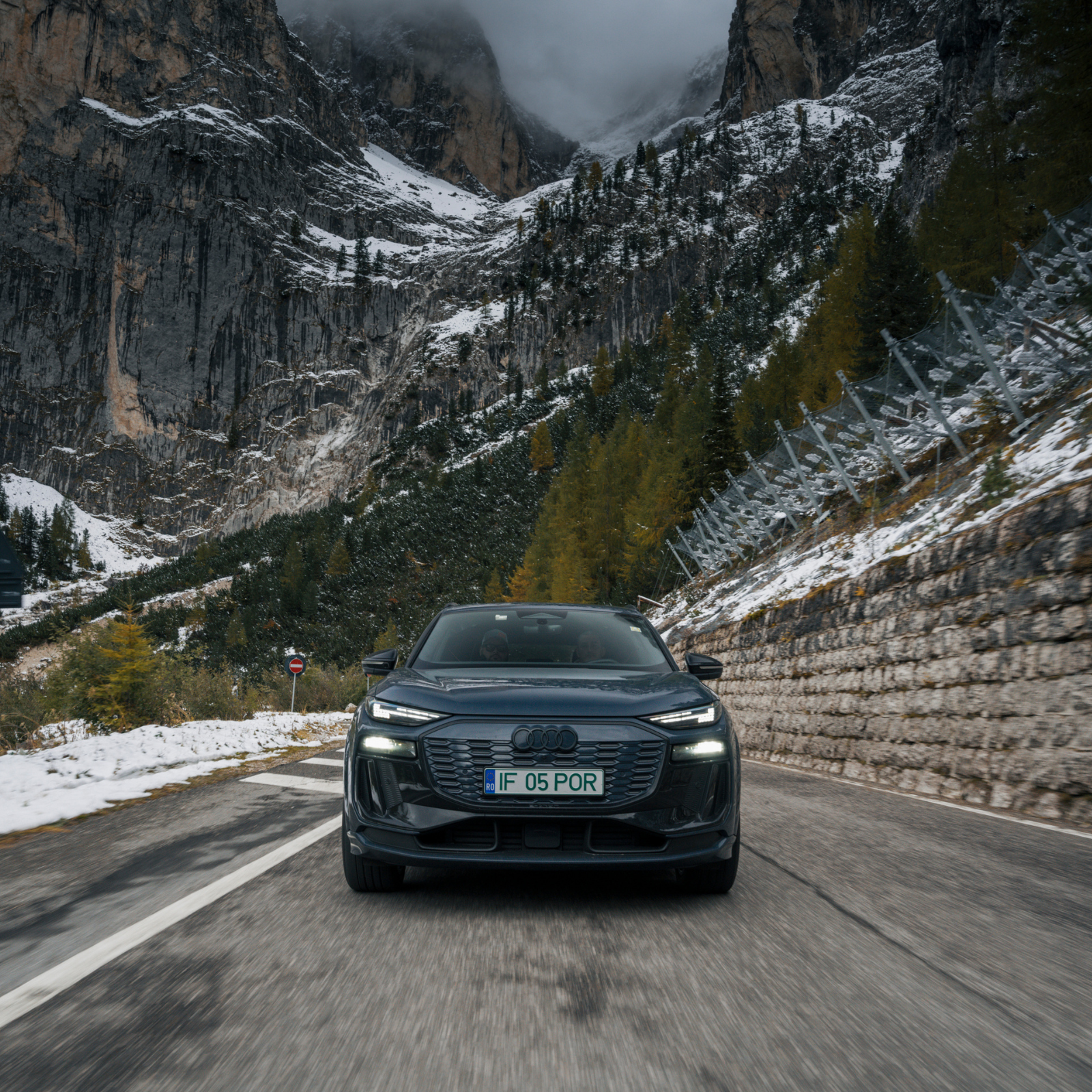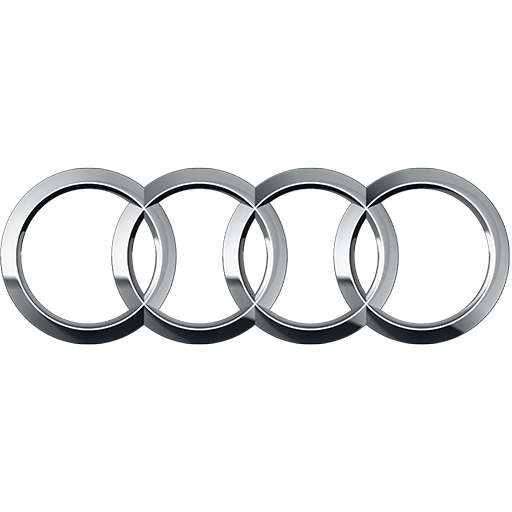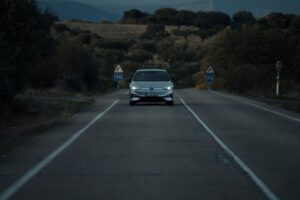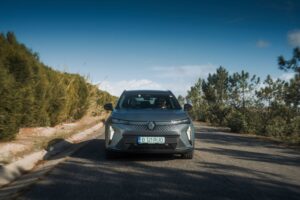The time has come to move beyond the plastic, metaphorical part of the EUROCHARGE by Schaeffler tour and introduce the analytical part. In short, the tables whose data we collected over the 16 days of the tour. First up on the board is the Audi Q6 e-tron quattro.
In its nearly 9,000 miles, the electric SUV has passed through the hands of 13 people, traveled long stretches of highway and mountain roads, or cruised calmly on national roads and through the outskirts of big cities. In this article you’ll find full details about the actual range, actual fuel consumption, charging costs and how much time we spent at the stations.
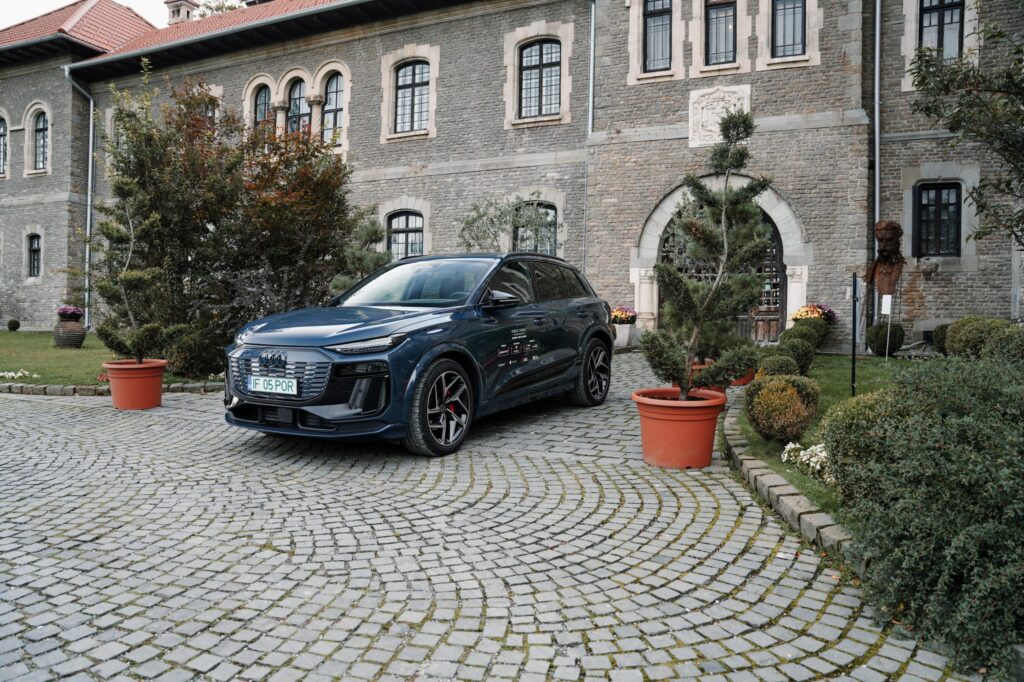

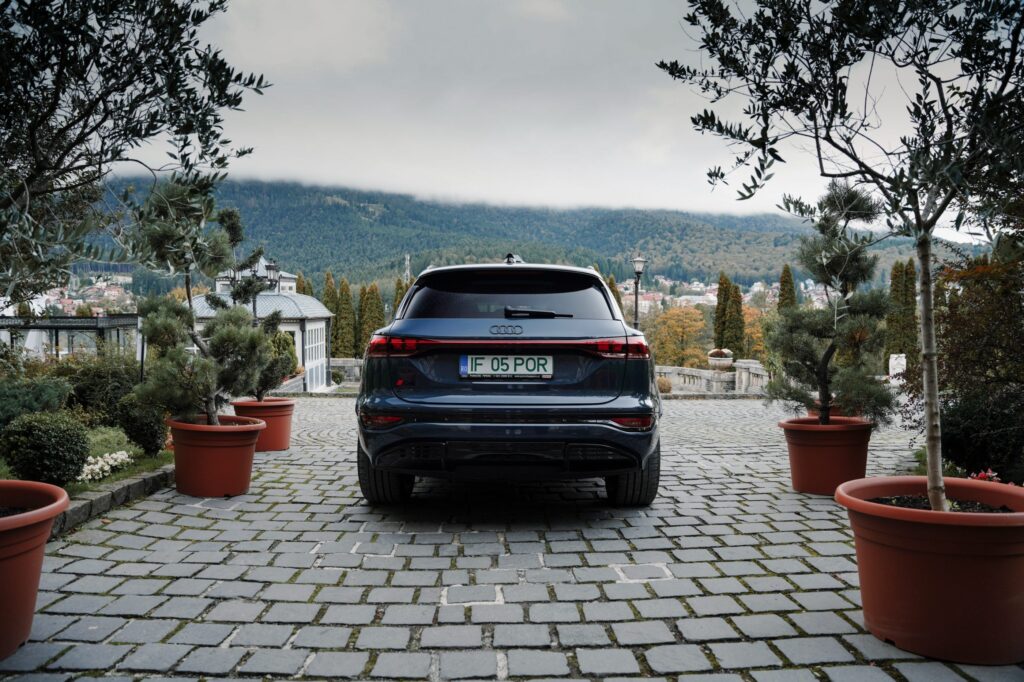
Audi Q6 e-tron quattro: energy consumption, actual range, charging costs
The average cost per kWh is between €0.39 – €1 and the average cost per kilometer is between €0.09 – €0.23. The costs are quoted as a range as they vary depending on the application used/subscription of each user.


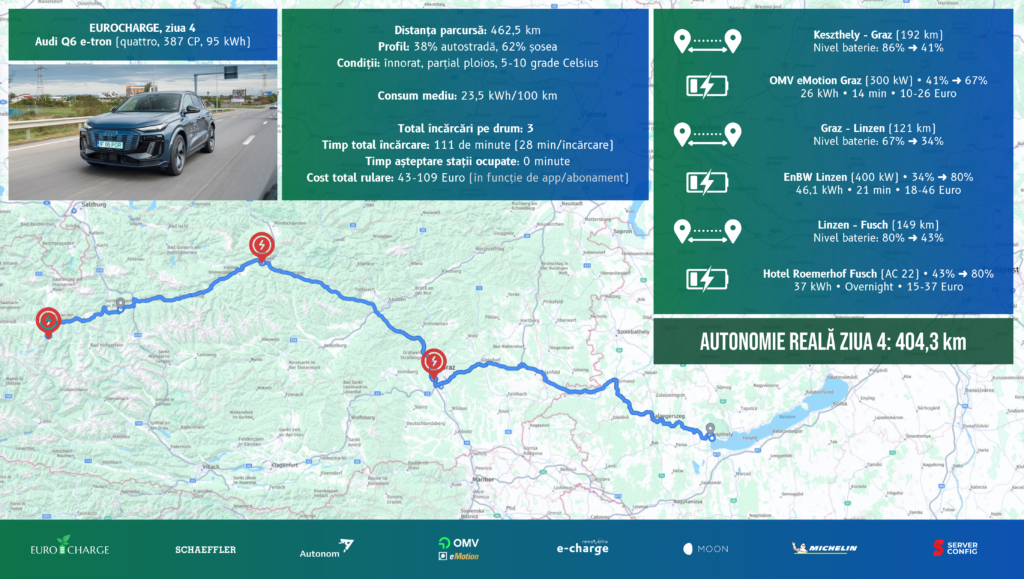
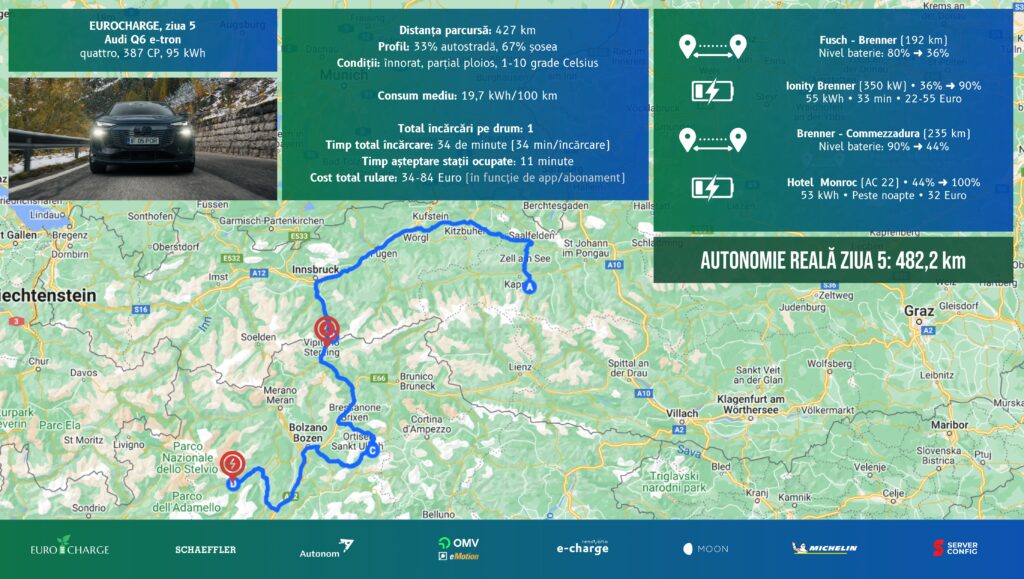
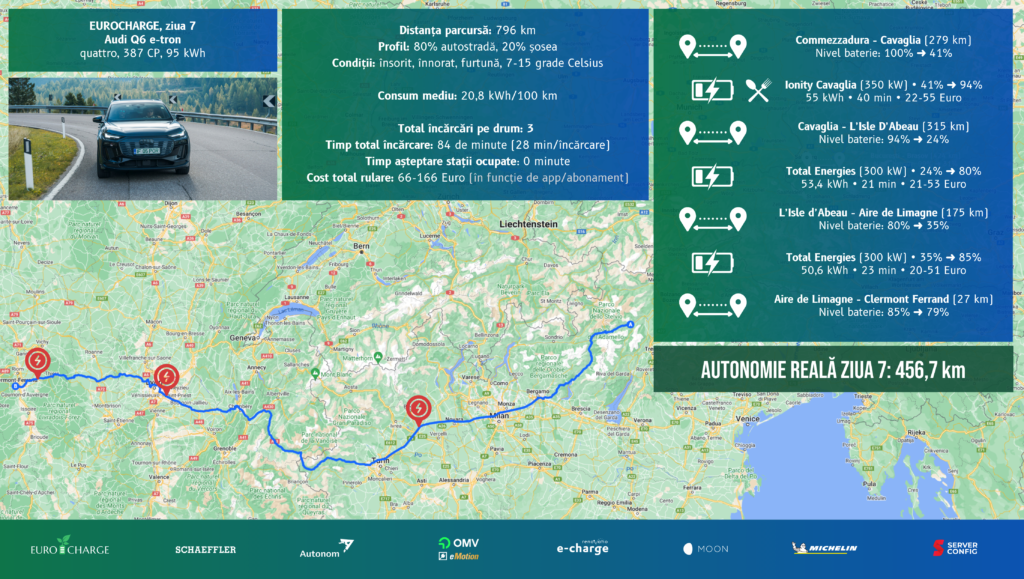
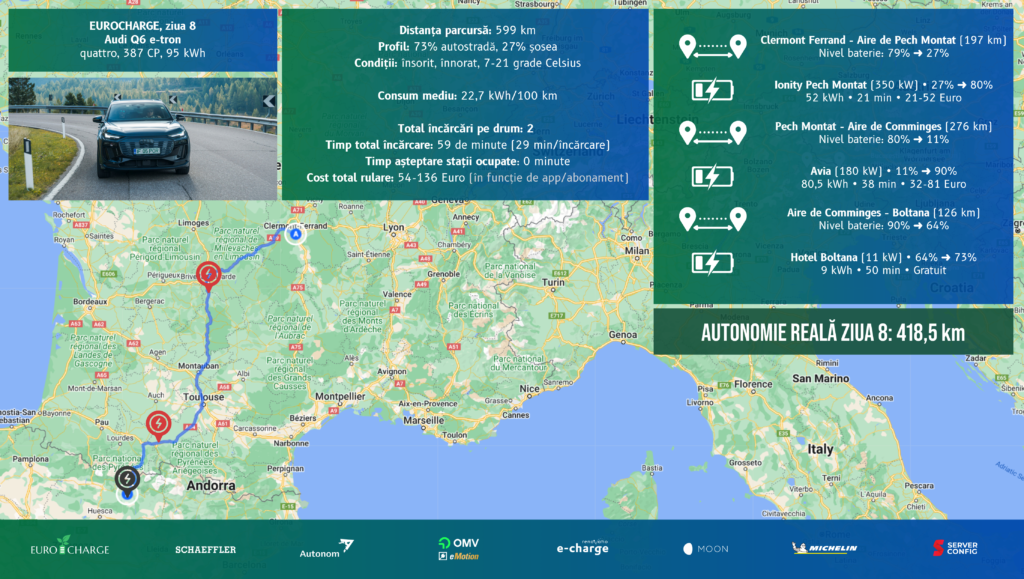
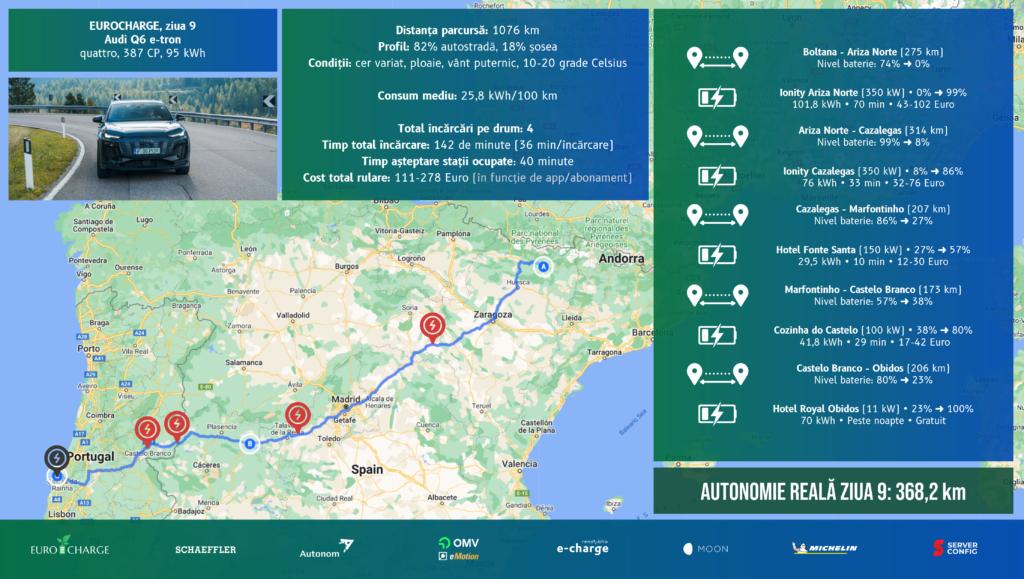
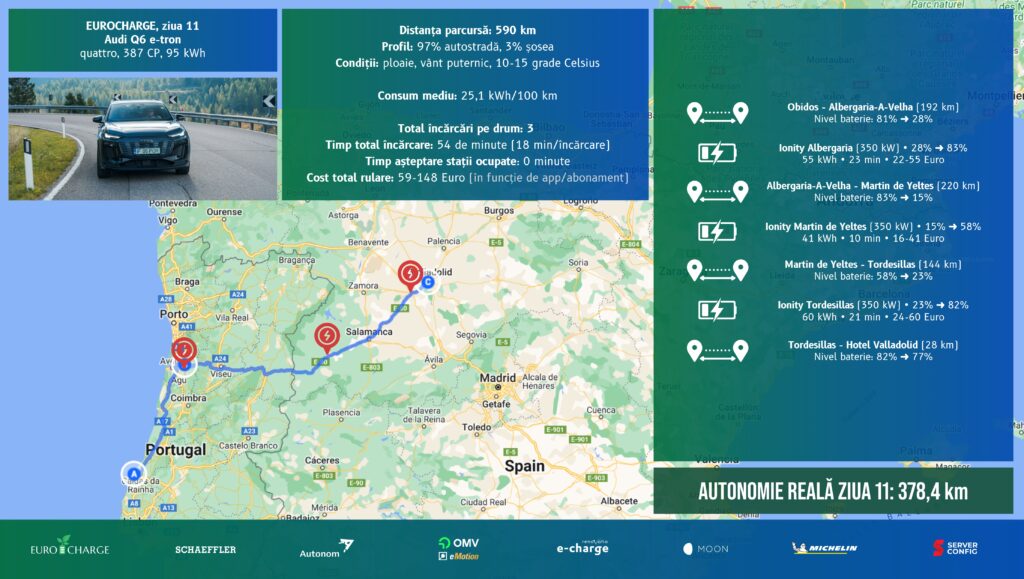
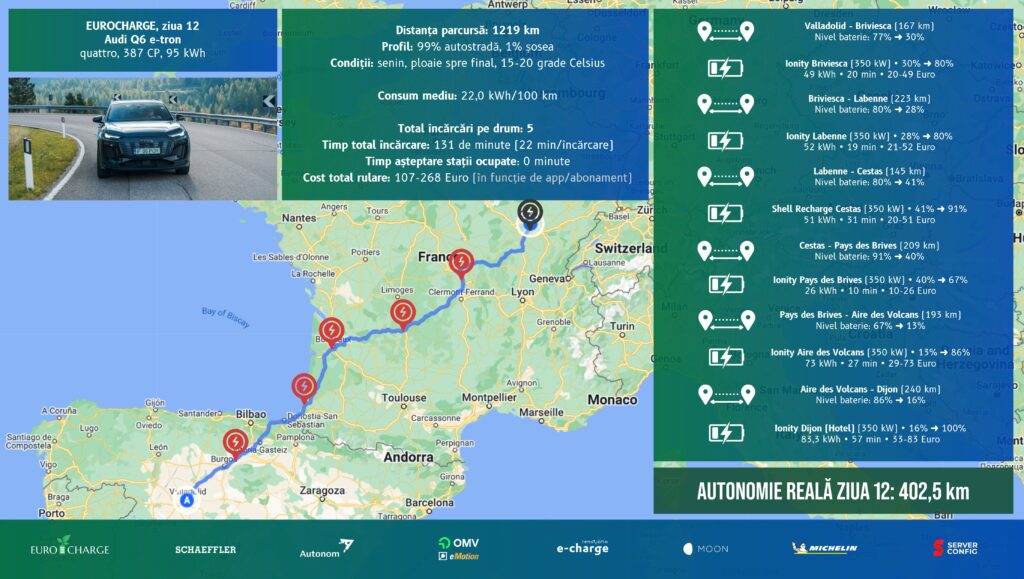
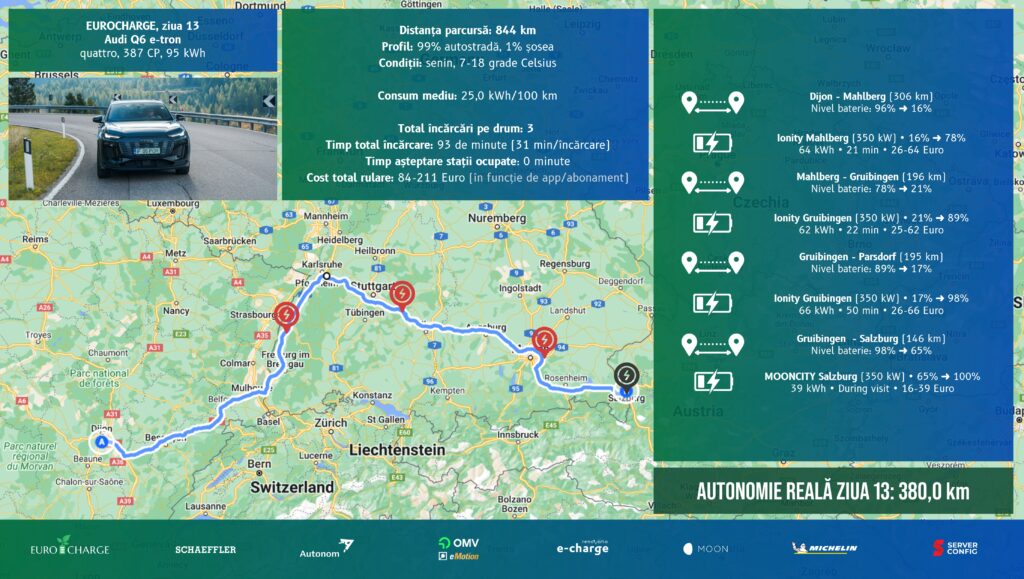
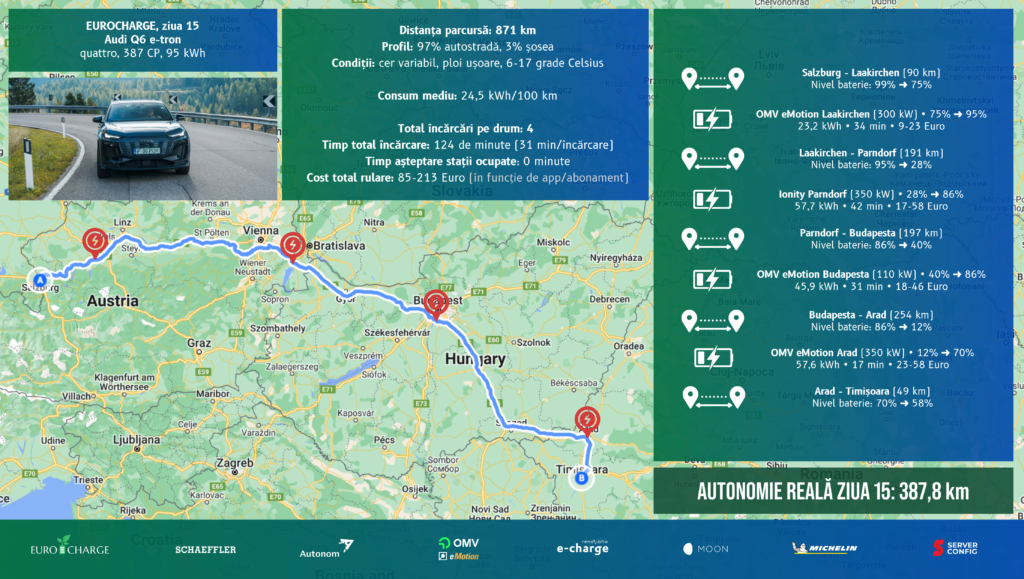
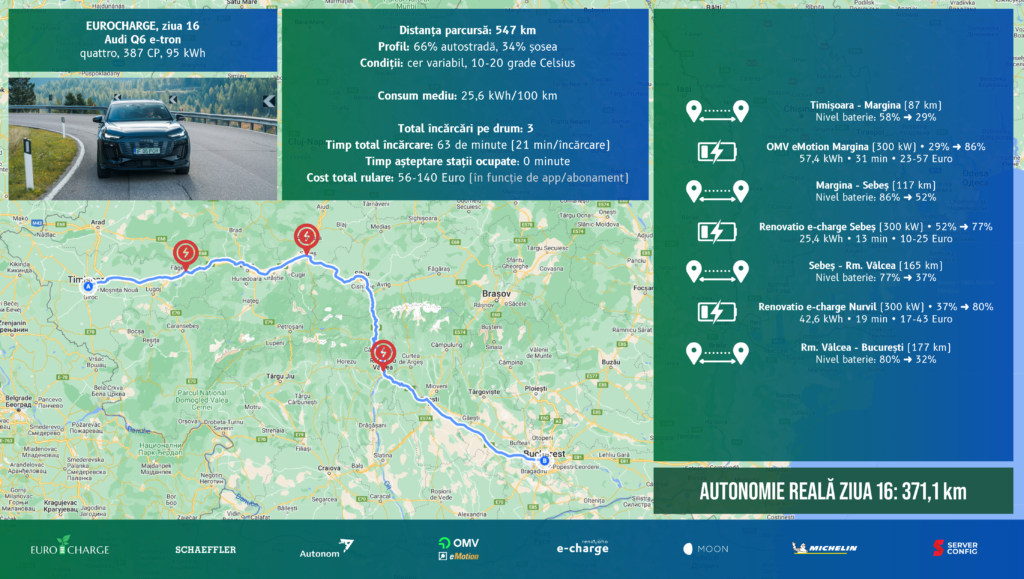
Impressions of those who drove the Audi Q6 e-tron quattro in EUROCHARGE by Schaeffler
Dan Scarlat (Top Gear Romania)
The Audi Q6 e-tron is an all-new, all-electric SUV in the German automaker’s lineup, based on an 800V technical platform called PPE (Premium Platform Electric), developed in collaboration with Porsche and also used by the new Macan. Advantages include excellent charging speed, if you’re lucky enough to have a capable station: up to 270 kW, or 10-80% in 21 minutes, according to Audi. We haven’t tested this yet, but we’ll have plenty of time in the coming days at #EUROCHARGE by Schaeffler. On the first day of the test, one with relatively low temperatures for this period (about 6 degrees in mountainous areas), we arrived in Brasov with a consumption of 22.6 kWh, which would translate into a real autonomy of over 420 kilometers.
In front of the driver is a powerful steering wheel that’s beveled up and down, as well as a massive, curved dashboard that includes two screens: an 11.9-inch instrument cluster and a 14.5-inch infotainment system. I’m so old that I remember the days when I wanted a 14-inch monitor for my “desktop” at home, and new cars had at most a monochrome screen the size of a current smartwatch. And that’s not all: the passenger can have his or her own 10.9-inch screen, with Active Privacy Mode so that whatever they’re doing doesn’t distract the driver. The infotainment system is modern and very fluid, but as is always the case, it will be ‘covered’ by Apple CarPlay or Android Auto in everyday life. There’s plenty of touch controls, including on the steering wheel (where Volkswagen has dispensed with them), as well as a classic rotary audio volume knob on the center console: everything you need to remind you of the analog world we’re leaving behind.
Our test features the quattro version with all-wheel drive, two engines and a maximum output of 388 hp. How does it drive? Exactly as you’d expect: relaxed, quiet, with permanent reserves of power, but no harsh reactions. The suspension is very well balanced and the steering is almost sporty, although it’s not the kind of car you want to race on twisties. One more important detail: the new Q6 is the first car in the VAG group with a true ‘one pedal’ mode, which you can access by moving the transmission selector to the ‘B’ position. When I say “true”, I mean that the car comes to a complete stop if you release the accelerator pedal, like electrics from BMW, Tesla, Volvo or Ford (at least the Mustang Mach-E), and not just slows down to 10 km/h, as in other models in the group. So if you pay attention and anticipate traffic, you can drive the car using just the accelerator pedal. I’m glad German engineers realized that for an electric car, this is the ideal solution.
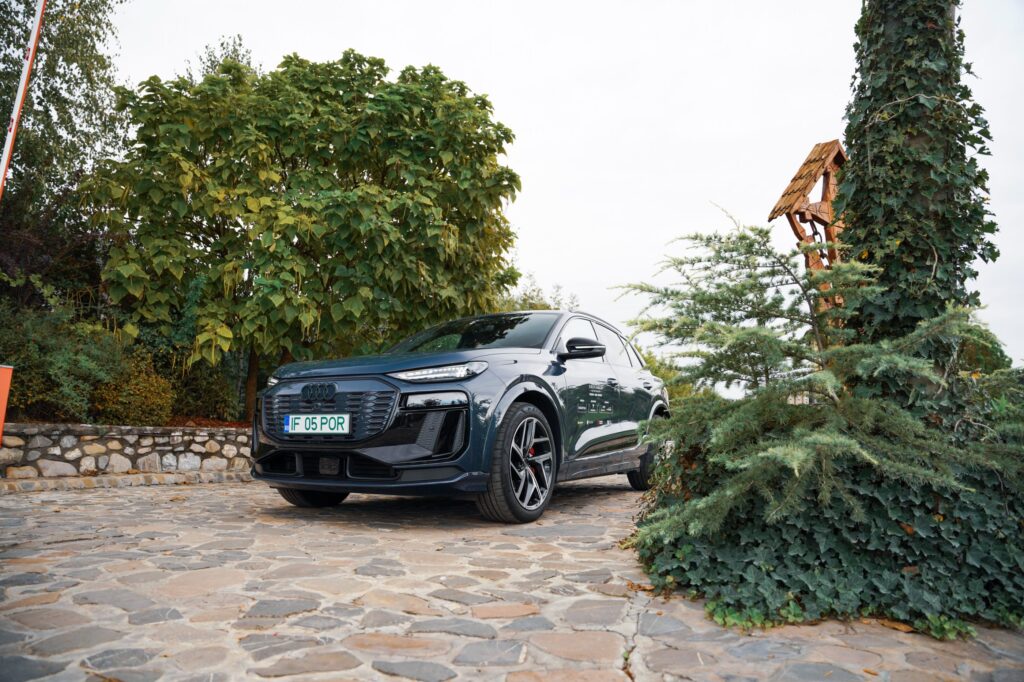
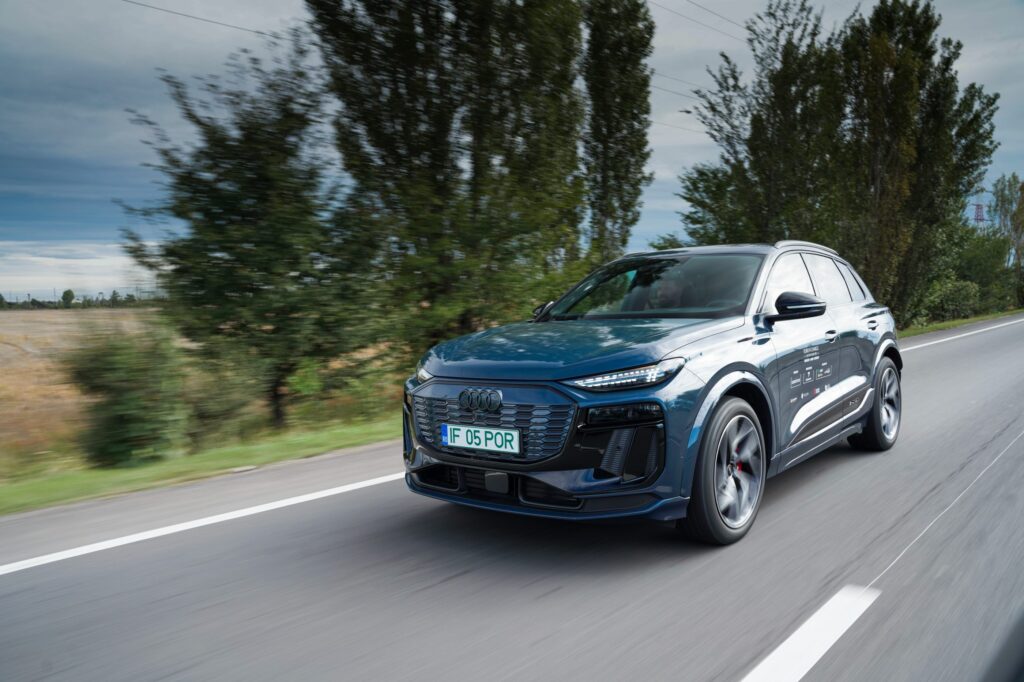
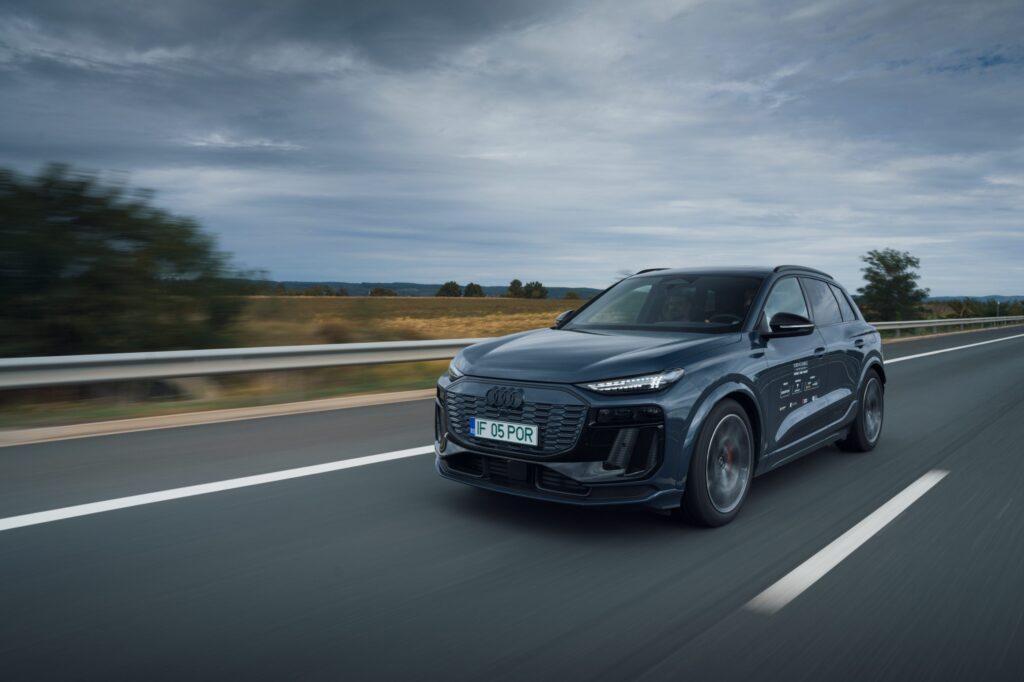
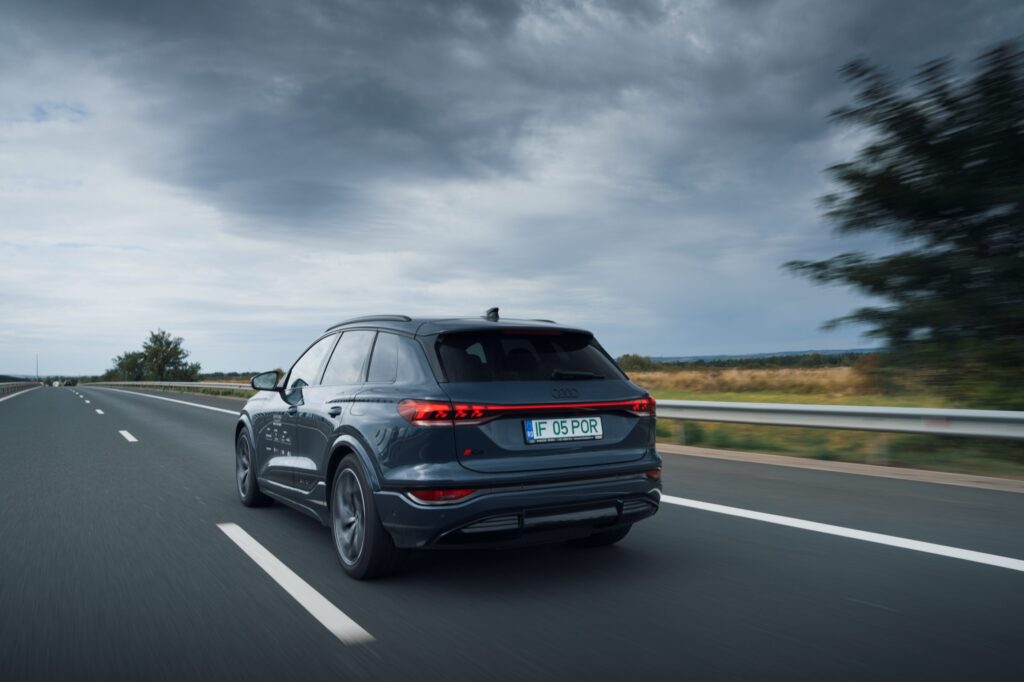
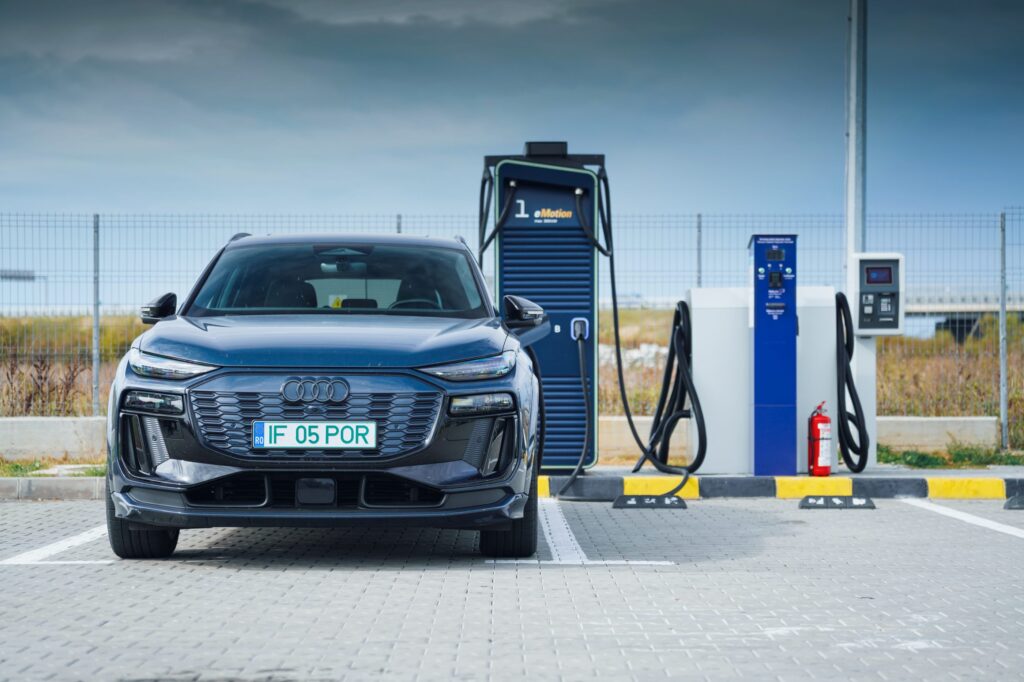

Constantin Ciobanu (AUTOCRITICA/Adevărul Auto)
If a car pleasantly tickles my eye, has that beauty that makes me tingle, it already alters my ability to be objective. Personally, I find in the Q6’s bodywork something of a Cayenne meets first-generation Touareg, especially when looking at the car from behind. And all slightly reduced in size to induce a sense of dynamics.
As Hungary and Austria are in the ‘christening’ zone these days, meaning rain, patchy fog and freezing temperatures, they didn’t give me the freedom to savor the 388 hp, little of the electric quattro I enjoyed at the end of the day.
And we’ve discovered a car that’s surprisingly alive dynamically. It hides its pounds very well. I can say that I prefer the Dynamic mode, the one where the suspension is a bit harder, communicates better to the driver what the wheels meet. Precise steering, with a degree of assist that I liked. For long journeys I found the seats a bit hard, especially the recline.
I can’t get rid of “ergonomic incongruities”. I still catch myself wondering why things are invented that don’t really do anything positive ergonomically and in terms of driving safety. The driver has a panel on the door that totals some 19-21 buttons, plus the 4 window buttons. To press a button there, which isn’t even very precisely demarcated, I have to take my eyes off the road and concentrate on identifying the button…
As we were driving at 5 degrees towards the end of the day, I find the average consumption of 21-22 kWh natural, considering the mixed route – highway/express roads. A plus for the steering wheel texture, I liked it!
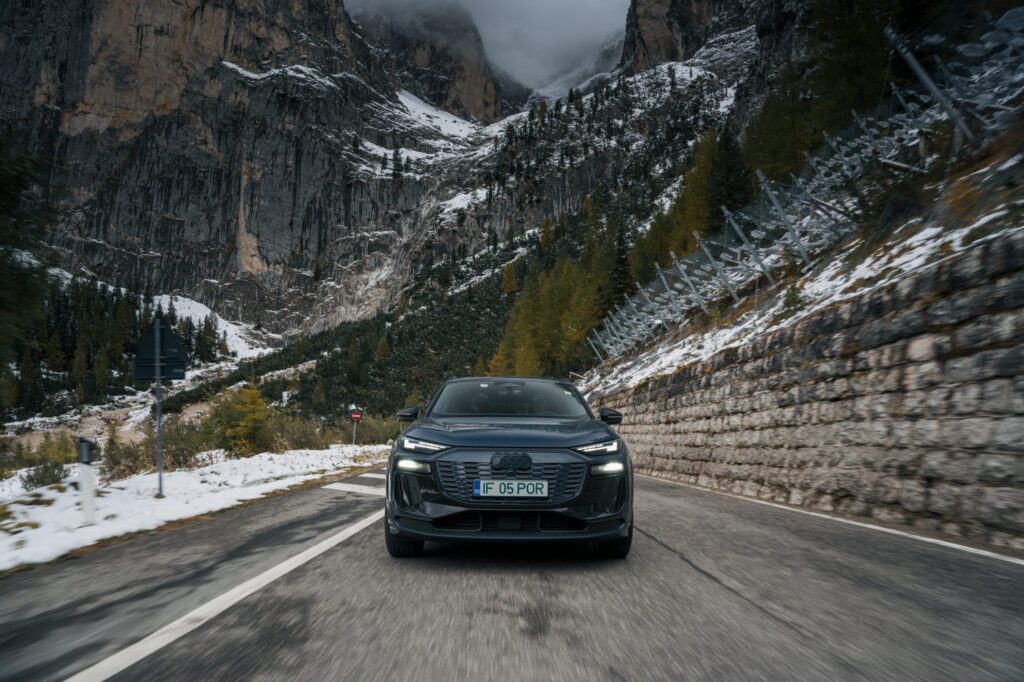
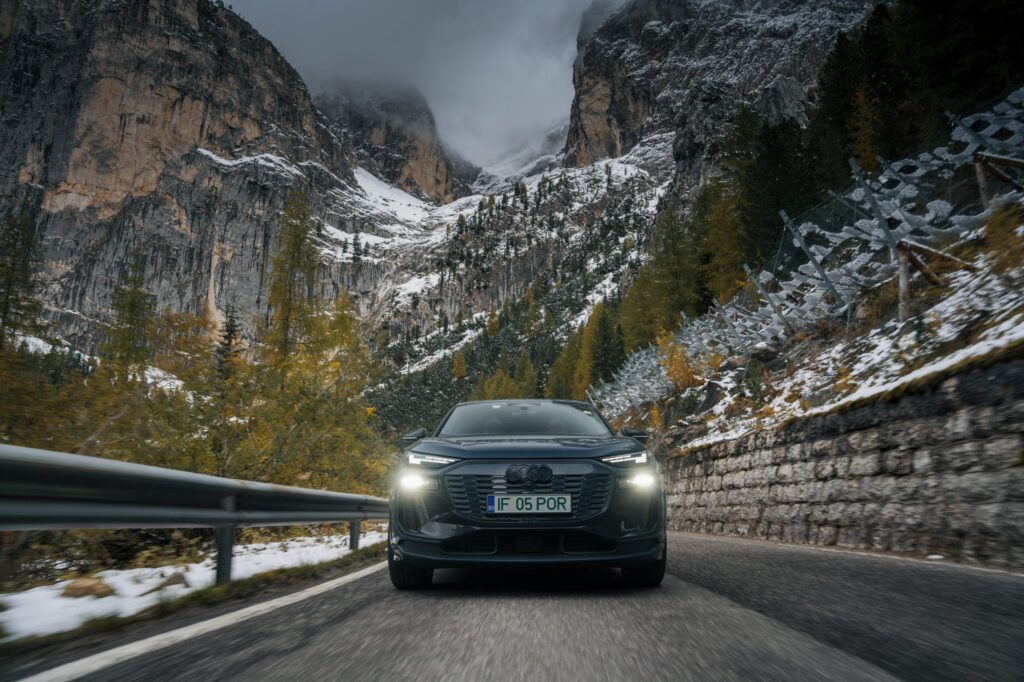
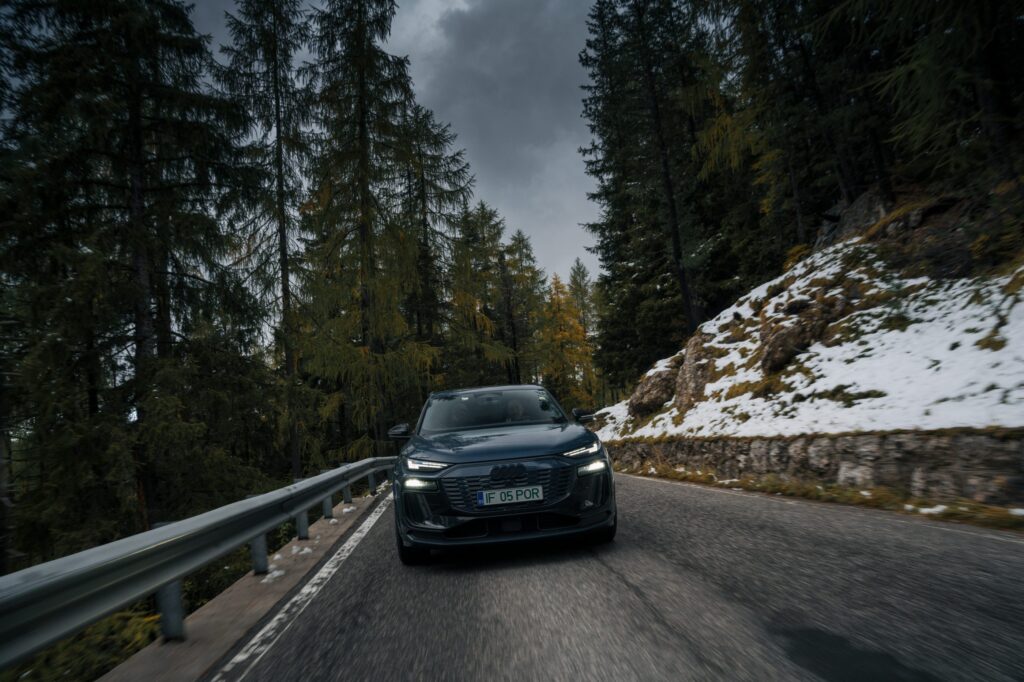
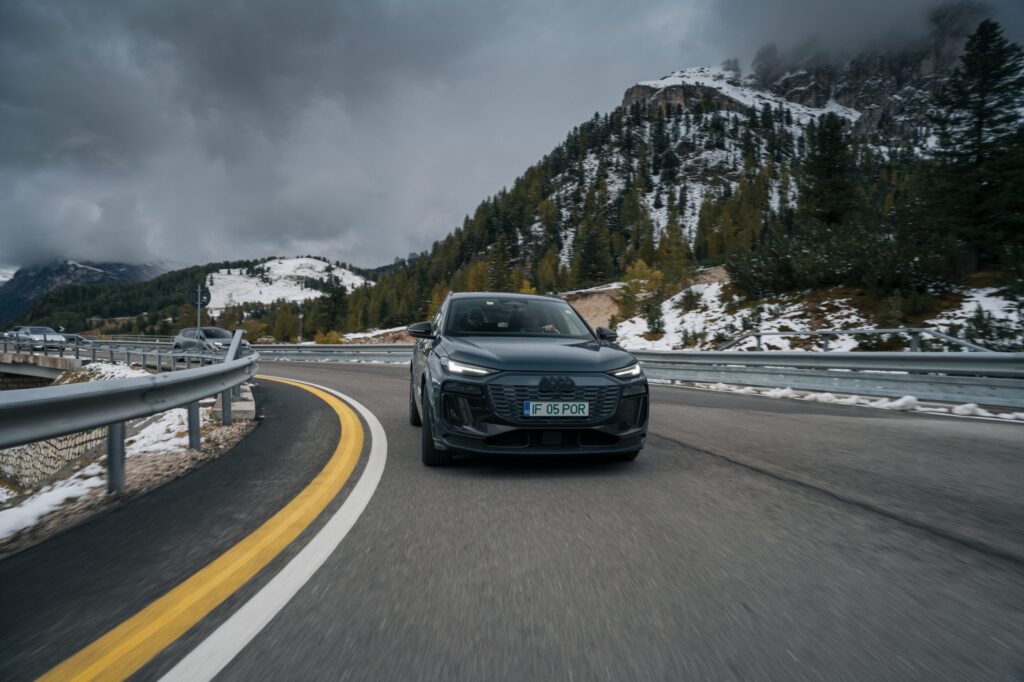
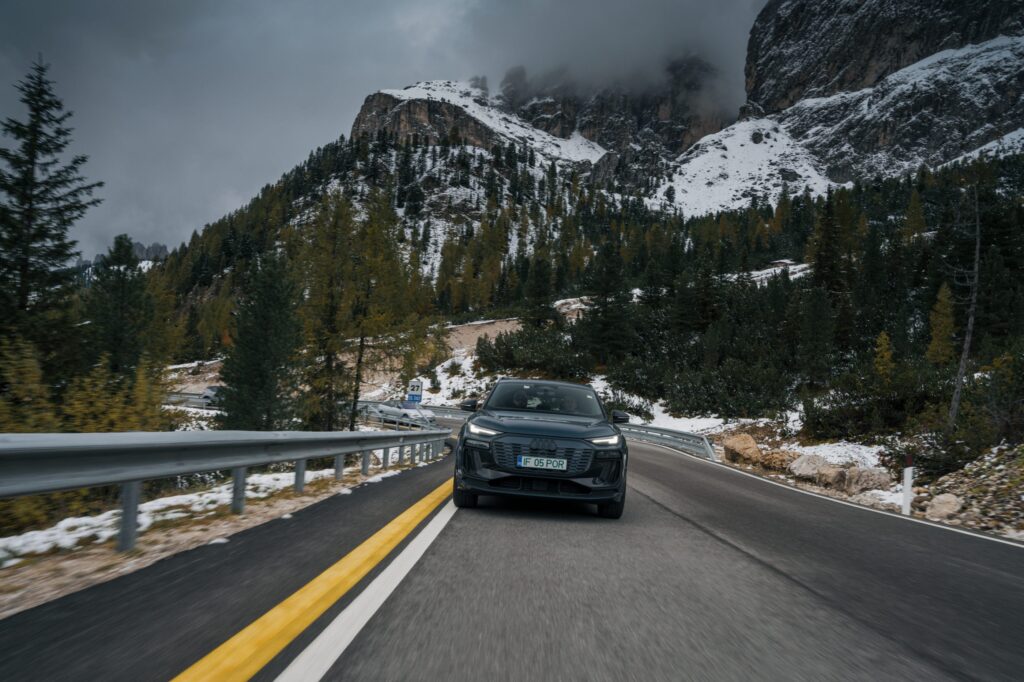
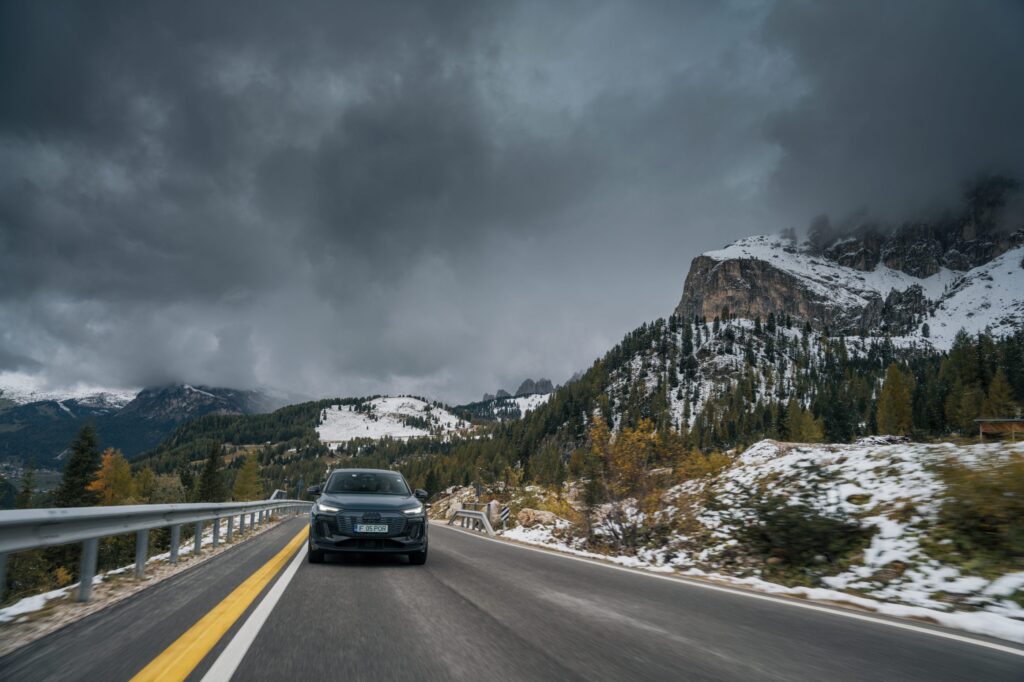
Gabriel Nica (Cu și despre mașini)
Beginnings are always hard, and Audi is now going through a reinvention phase almost from scratch. The electric era looms in the distance, and it seems to have no patience for any automaker, especially when there’s an oriental wind blowing in your face.
I like to say that thermal and electric cars are completely different species. However, there’s always something familiar about traditional car manufacturers’ cars. In the case of the Q6, it’s the comfort and refinement of the finished product that is that ‘familiarity’.
During the two days and about 600 kilometers driven in the Audi A6 e-tron, I understood that the Iugolstadt-based company wanted to preserve much of the character of the cars that have made them famous. It’s a model with a level of refinement that’s hard to match, with all the technology you need today, but also with some “quirks” that could have been forgotten.
Perhaps a splash of color inside would have been a breath of fresh air. Maybe the seats could have been more comfortable, and maybe Audi would have been better off not falling into the modern trap of adopting ergonomically unsound solutions just because they look “modern”.
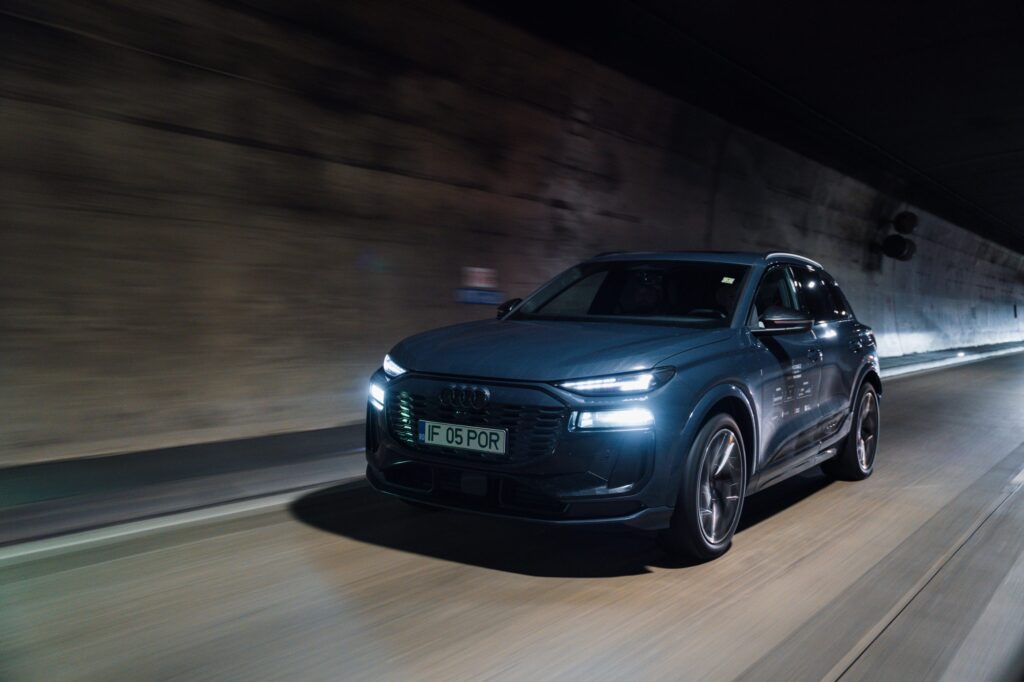
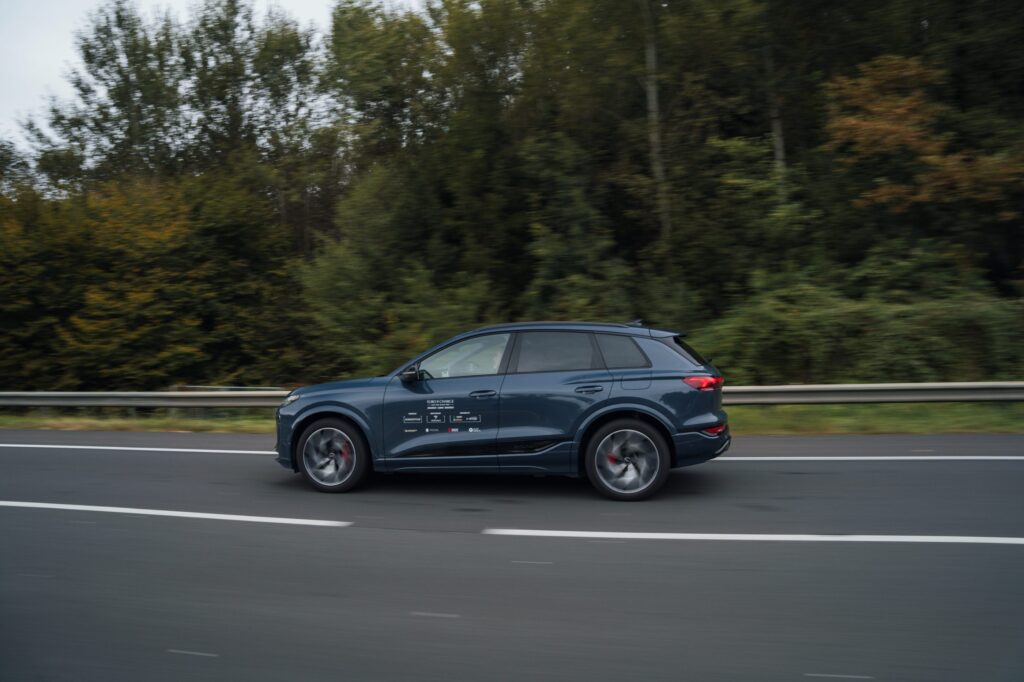
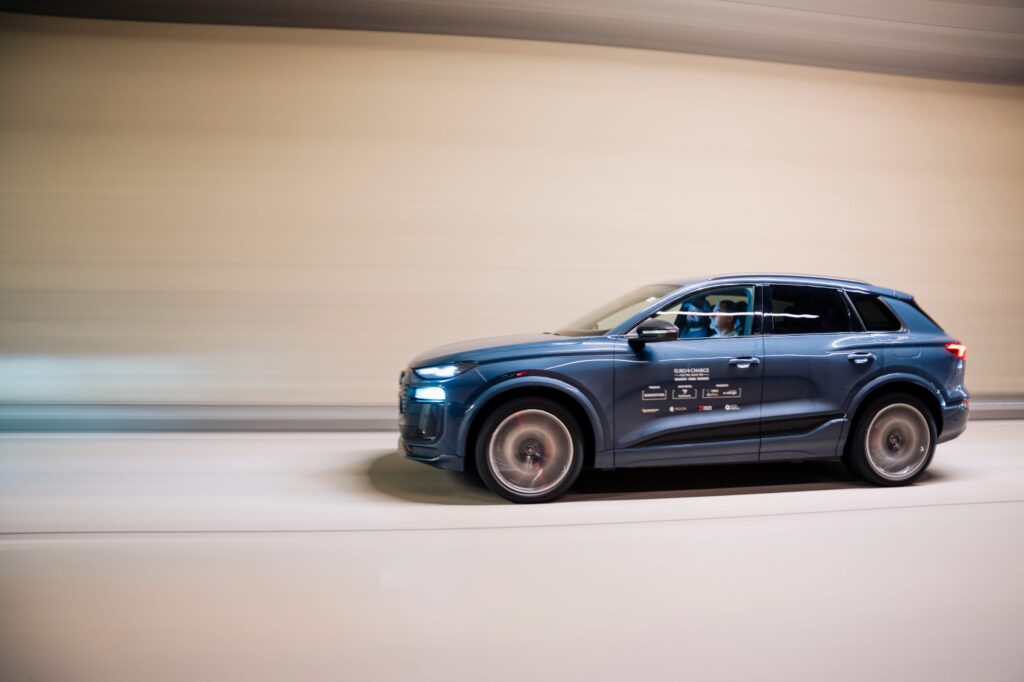
Mihai Vasilescu (Digital storyteller)
The Audi Q6 e-tron e-tron behaves and does things exactly as you’d expect from a car costing over €100,000. To be more precise: €104,655, which is the price of the car we have in EUROCHARGE. Or with an Autonom Business Green operating lease: €1,141 / month.
It’s packed with cutting-edge technology and the materials used are of the highest quality. Just touch your hand anywhere inside and you’ll immediately realize that cheap plastic has no place in a car that costs as much as three studio flats in Rădăuți.
It has two engines, one at the front axle and one at the rear axle that together produce no less than 388 horsepower and a maximum torque of 580 Nm. Of the cars in the EUROCHARGE only the Porsche Taycan is more svelte and performs better, but not by much, mind you. Nothing to say, on that front the Q6 really is worth every penny.
However, if I ever had €100,000 to spend on a car, assuming I’ve since retrained as an accountant, there’s no way I’d buy this one with two engines. The calculation is simple, the one we have on tour has two engines, a 95 kWh battery and manages a range of over 400 kilometers.
Which means, if I give up an engine, the range will increase significantly. Yes, the car won’t get out of the driveway so quickly, but you know us accountants are more conservative that way, we only feel more rebellious on days when the moon closes.
In short, I’ve been lingering. I liked the car, I absolutely hate the colors it comes in. It’s like it pains the designers at the Ingolstadt factory to try an emerald green or a pearly burgundy.
Oh, no, I’m lying, there’s something else I don’t like: for that money it could have come with some side-support seats, so you don’t feel like you’re in a roller coaster when you’re cornering.
And another thing, maybe it wouldn’t be bad if they drove their cars and the people who design them. But not like that anyway, driving at night, in the rain like hell, and needing to press one of the 483 buttons on the door handle, a button you can’t find by feel.

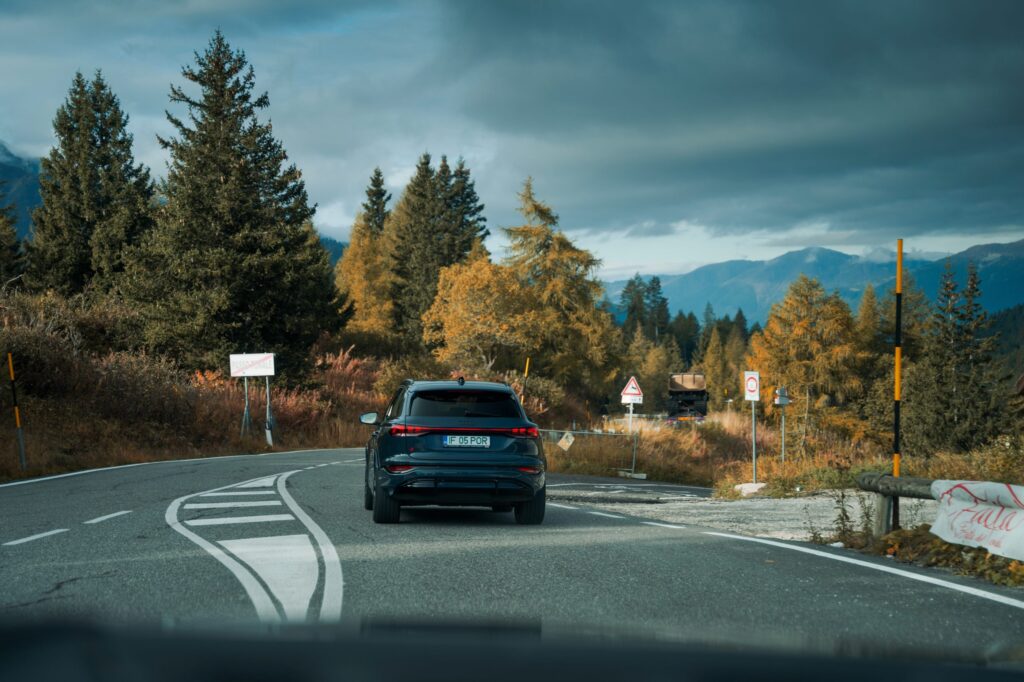

Adrian Mitrea (0-100.ro)
It’s hard to pick what impressed me most about the Audi Q6 e-tron quattro, so I’m picking several. And a few minuses.
The car has charged exemplary in all the 1,000+ miles I’ve spent in it. Often powers over 250 kW and 10-80% in 20-25 minutes. Range? Always around 400 km in rough conditions: rain and strong headwind. Wind so strong it knocked over a trash bin right next to the car at a charging station in Spain.
The LED matrix headlights and suspension are state of the art, as on any Audi in the 100,000 Euro range. I felt comfortable on board, all the way. A car in which almost nothing bothered me can be the definition of a good car. This is the Q6.
But yes, there are minuses: the icons on the multimedia system are too small, and some are obscured by the steering wheel. Also the charging port covers, they smell like a nerve source. So the latter I’d avoid in the car setup (can do without them).
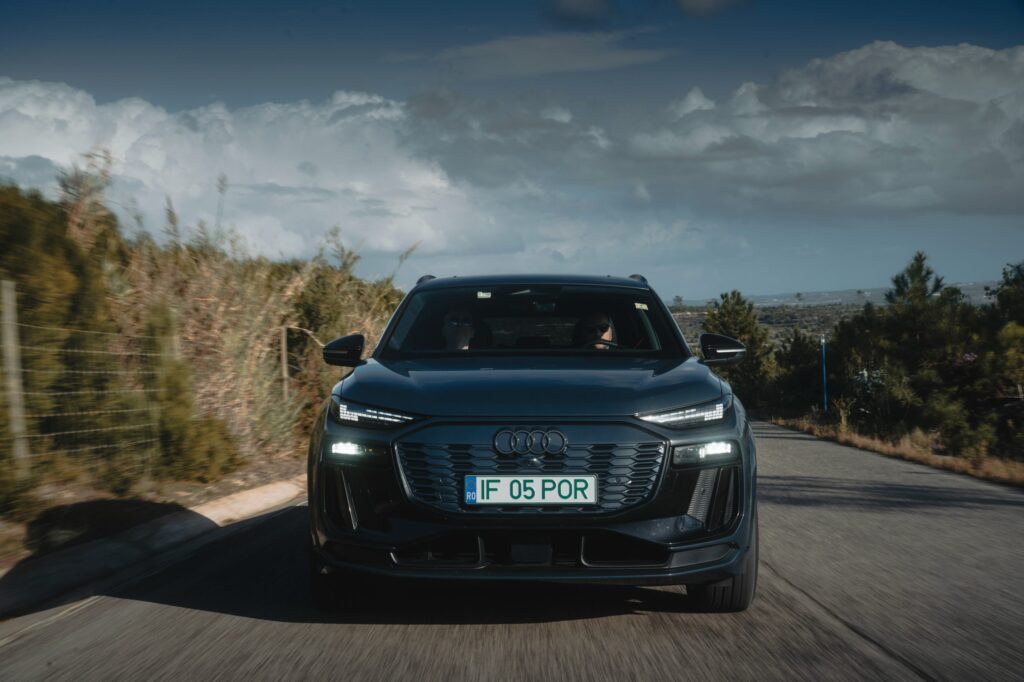

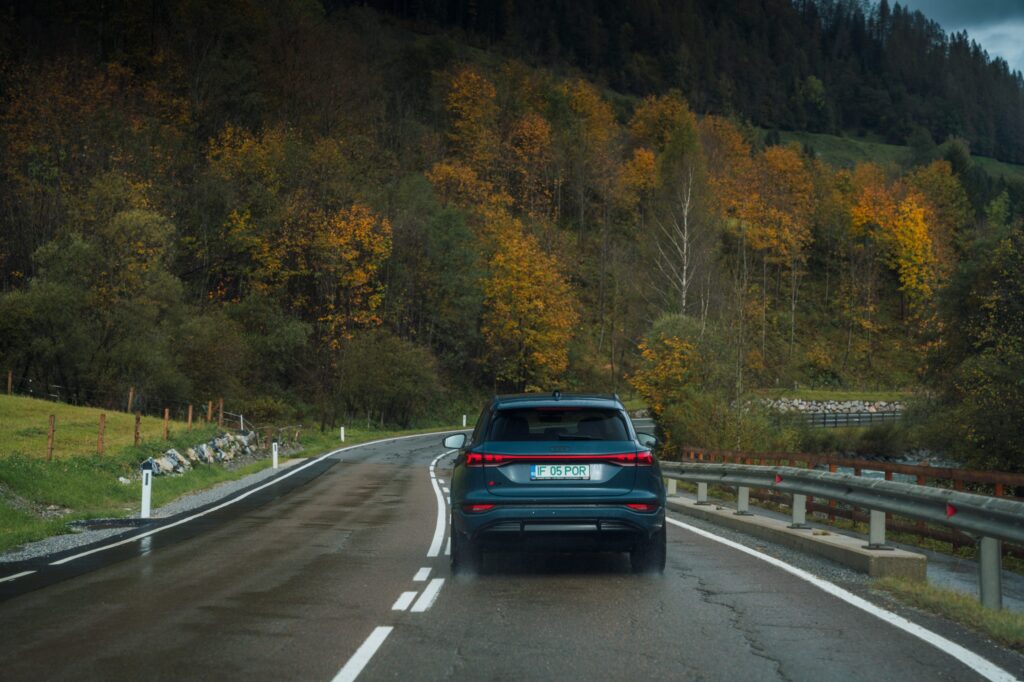
Laura Antonov (LaChicBoutique)
I think the most important thing I’ve learned on this electric car road trip is that, yes, range is important, but just as important is how quickly you charge the car.
And in that respect, the Audi Q6 e-tron wowed us at every charging stop, rushing us back on the road.
If the Porsche Taycan is the rich and eccentric guy in the group, the Audi is definitely the elegant and understated type, despite its size.
And even if it’s not butterflies in my stomach like the Porsche Taycan, as I discovered it, I realized that the Audi Q6 is a much more rational choice, ticking more boxes of what I would need from a car (space and utility first and foremost).
Technology and features explain the €100,000-plus price tag, and if that doesn’t scare you off, then you’re sure to find the Audi Q6 e-tron the ideal partner for vacations (and beyond), even road trips from Bucharest to Lisbon and back.
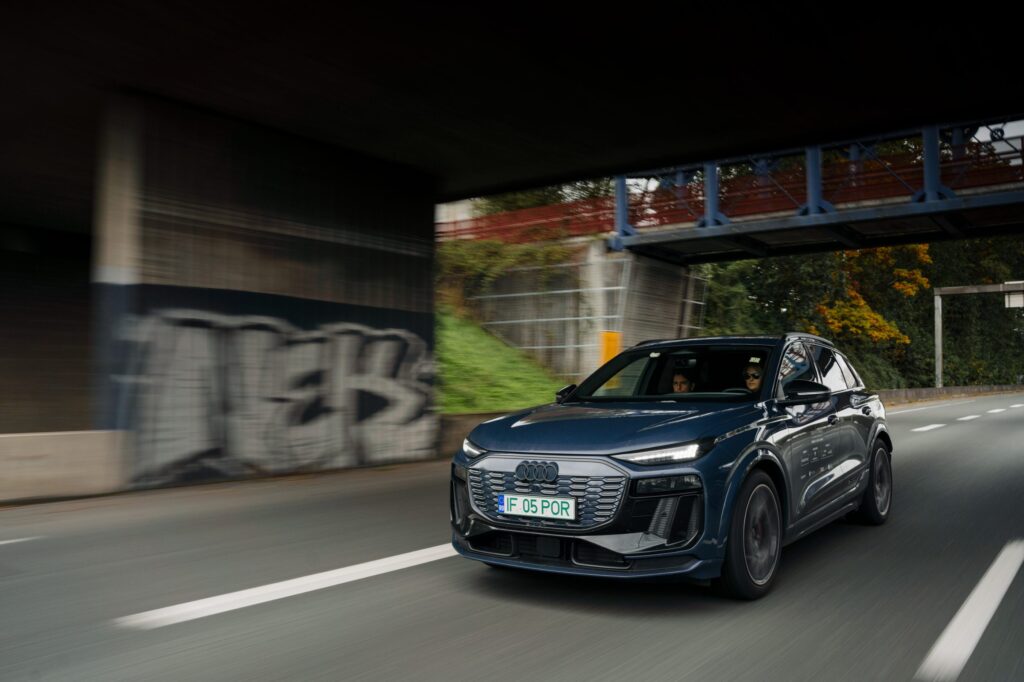
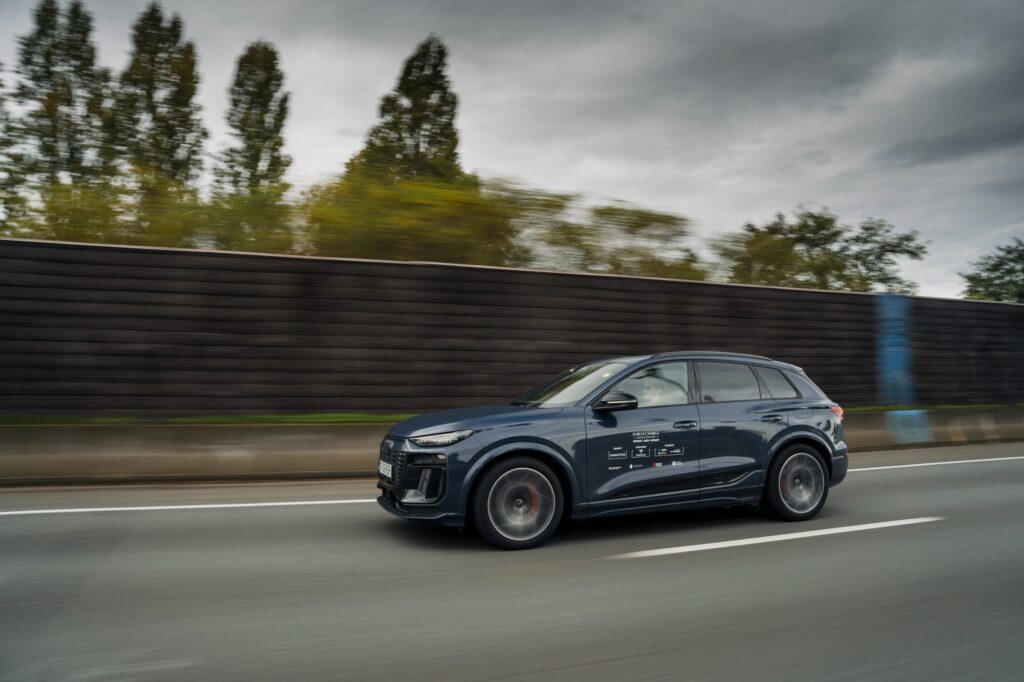
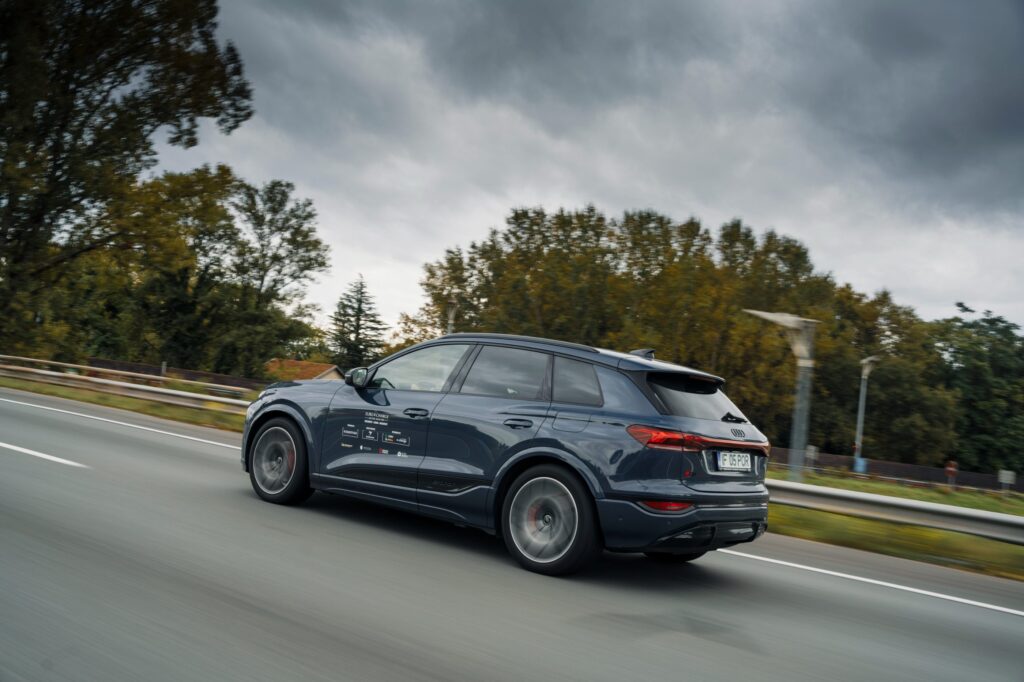
Tibi Buzdugan (electromobilitate.com)
The Audi Q6 e-tron e-tron is exactly what you’d expect from a premium car over €100,000. Very comfortable, very quiet even on the highway (at speeds up to 130 km/h you can barely hear the wind). All surfaces you touch inside are very smooth. I particularly liked the Alcantara-covered dashboard, which also had a layer of sponge under the upholstery.
The HUD is one of the few that looks decent even with polarized sunglasses. Not perfect, but you can easily read the information on it. Unfortunately, it doesn’t have too many options to customize the information displayed. Same goes for the screen behind the steering wheel.
You can go long distances without range anxiety even on the highway, where range is approaching 400 km. And if you do run out of battery, the 800V architecture helps you get on your way very quickly. At over 250 kW, 15 minutes is enough to add over 250-300 km to the battery.
In the 500 miles I drove it, there were a few problems that I eventually solved, but I didn’t expect that in a premium car. The charging only worked when the car was locked. The charging port cover is motorized, so you had to hold it by hand while locking the car to keep it from closing by itself. When unlocking the doors, the charging would sometimes stop itself. The second problem was related to the infotainment system: if the phone was plugged in before the multimedia system was initialized, it went into a charging loop that we couldn’t get out of even by repeatedly restarting the car. We finally managed to reset it on the go, with all cables disconnected, by holding the multimedia button in the center console for 30 seconds. Thank goodness for years of assembling computers and debugging, otherwise we would have had to drive 100 miles with no screens in the car and almost non-functional assistance systems.
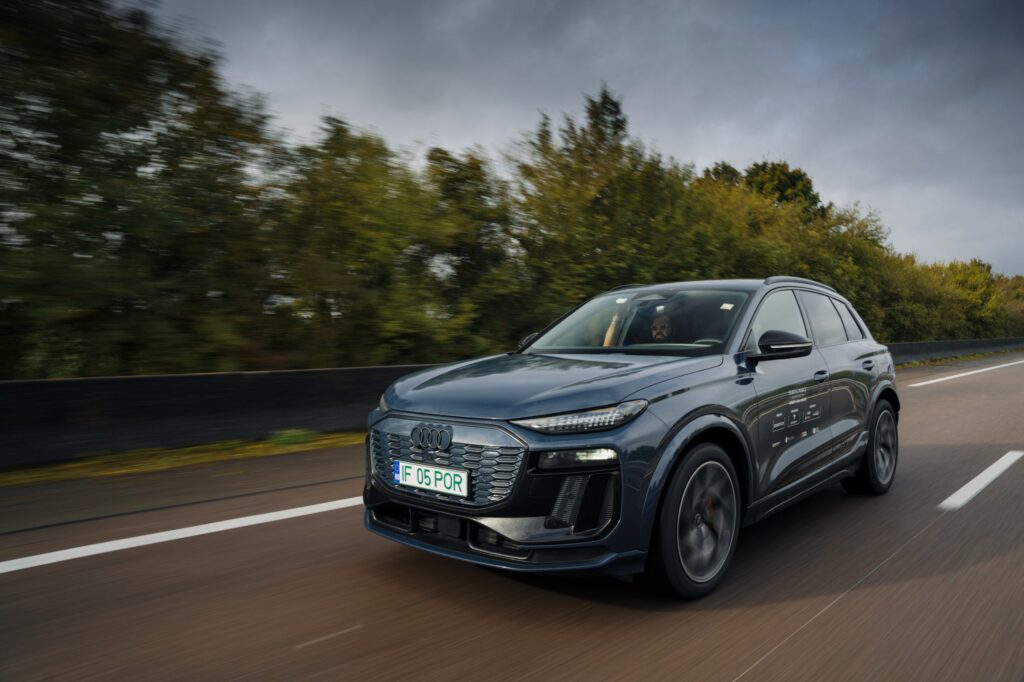
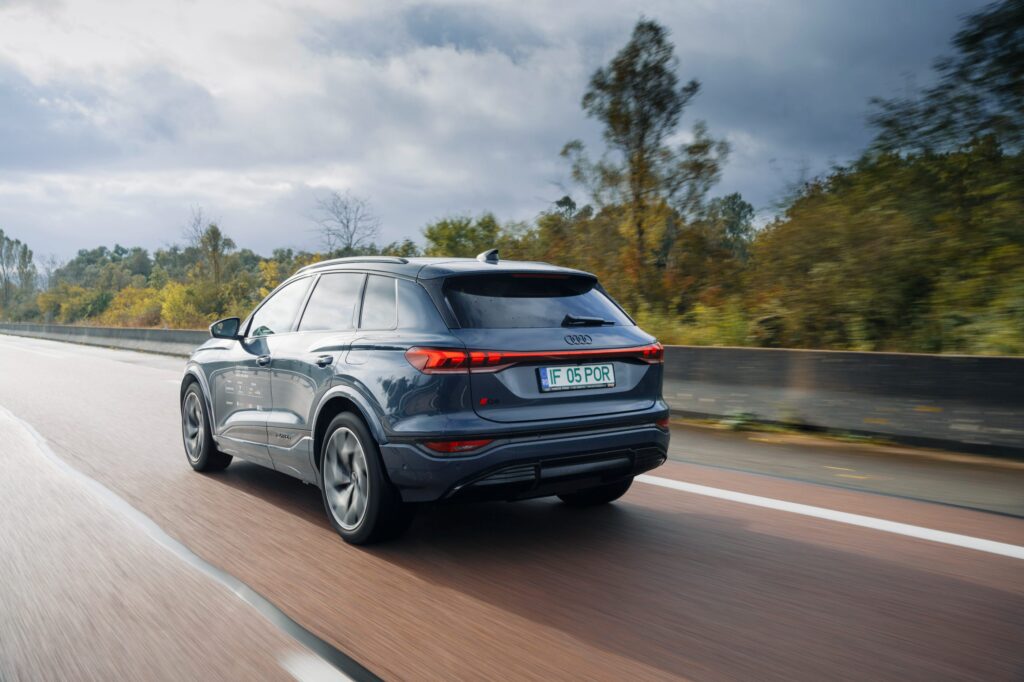
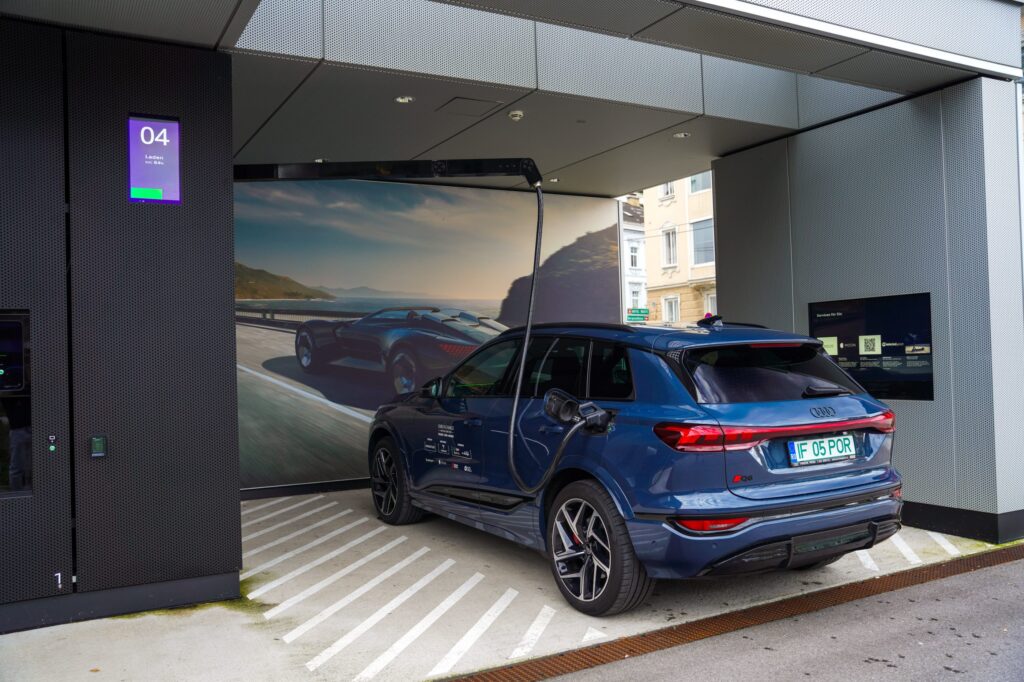
Andrei Barbu (MotorVlog TV)
The Q6 e-tron is the last electric I’m driving on this tour. And that means I can “judge” it by the standards and lessons learned with the rest of the cars.
The drive from Salzburg to Timisoara is neither very long nor very demanding, but it’s still almost 900 kilometers. That’s enough time to realize that the Audi Q6 e-tron is a superbly built car. Materials, details, buttons, controls, ambient lighting, everything is faultless. As it should be if you take a look at the price list. Said another way, the Q6 e-tron is a pure-blooded Audi, premium without a doubt, with technology and skills to match.
The air suspension is the link that severs any connection between the imperfect asphalt and the interior, the sound deadening gives you no audible clue as to how fast you’re going on the highway, and the gorgeous seats are the perfect companion for a long drive. As for efficiency, there’s a lot to say here. But I’ll make just one point: the Q6 e-tron charged from 12 to 70% in 17 minutes, with an average charge rate of 198 kW. Absolutely MI-NU-NAT!
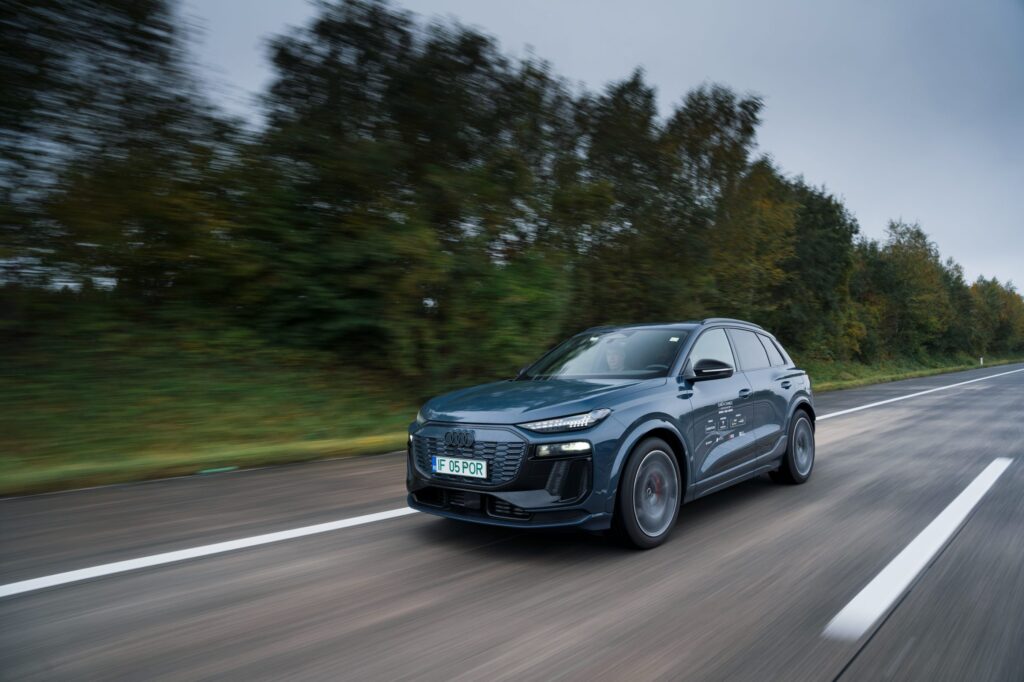
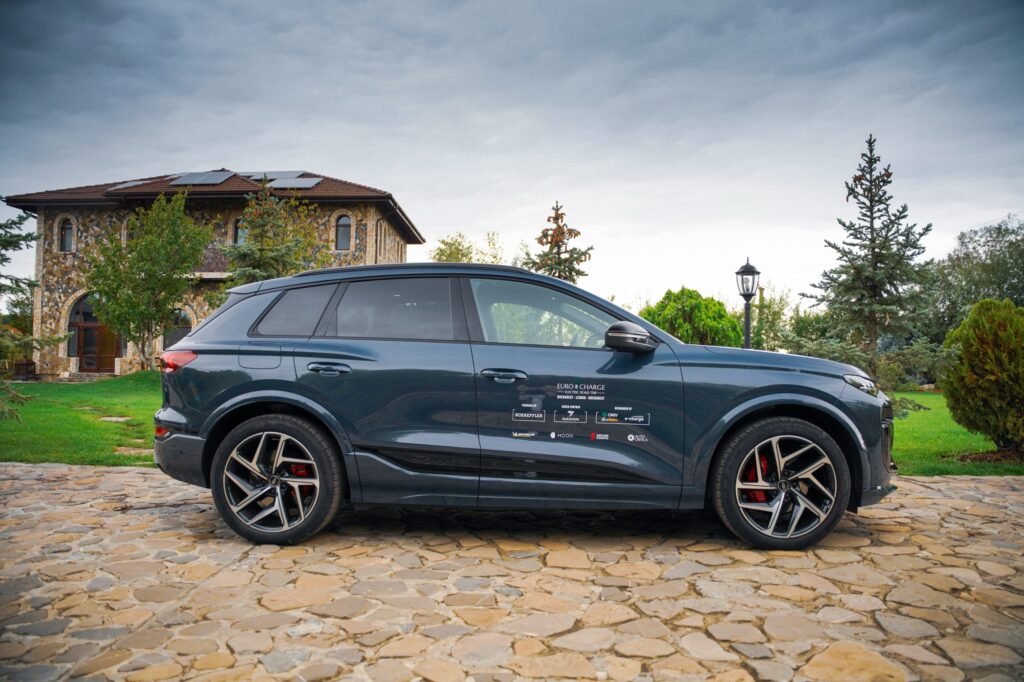
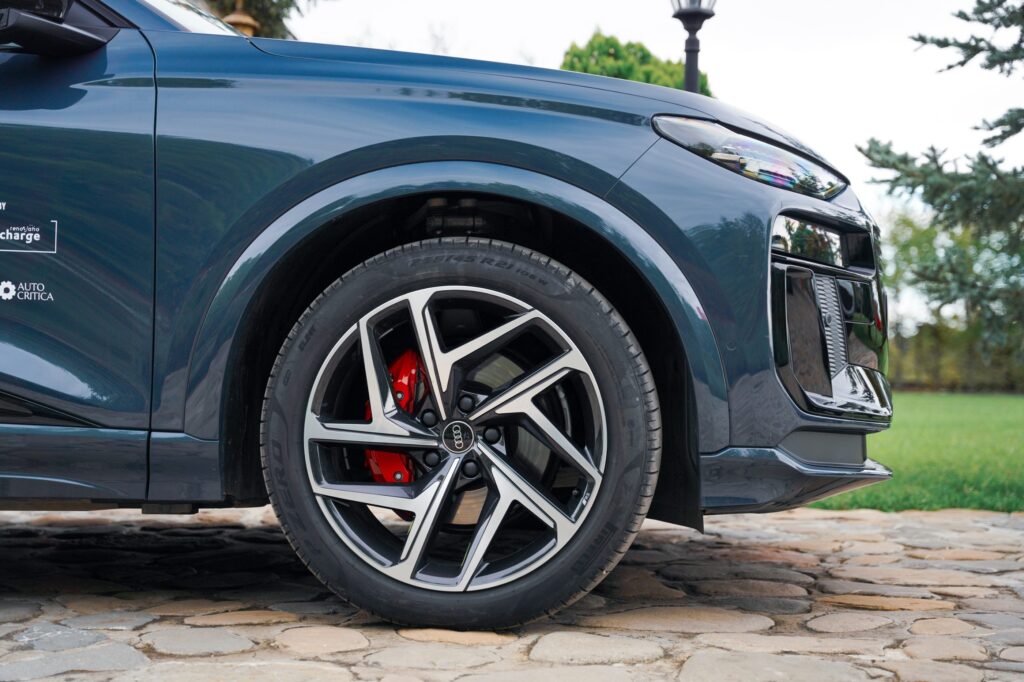
Technical specifications of the car that accompanied us in EUROCHARGE by Schaeffler
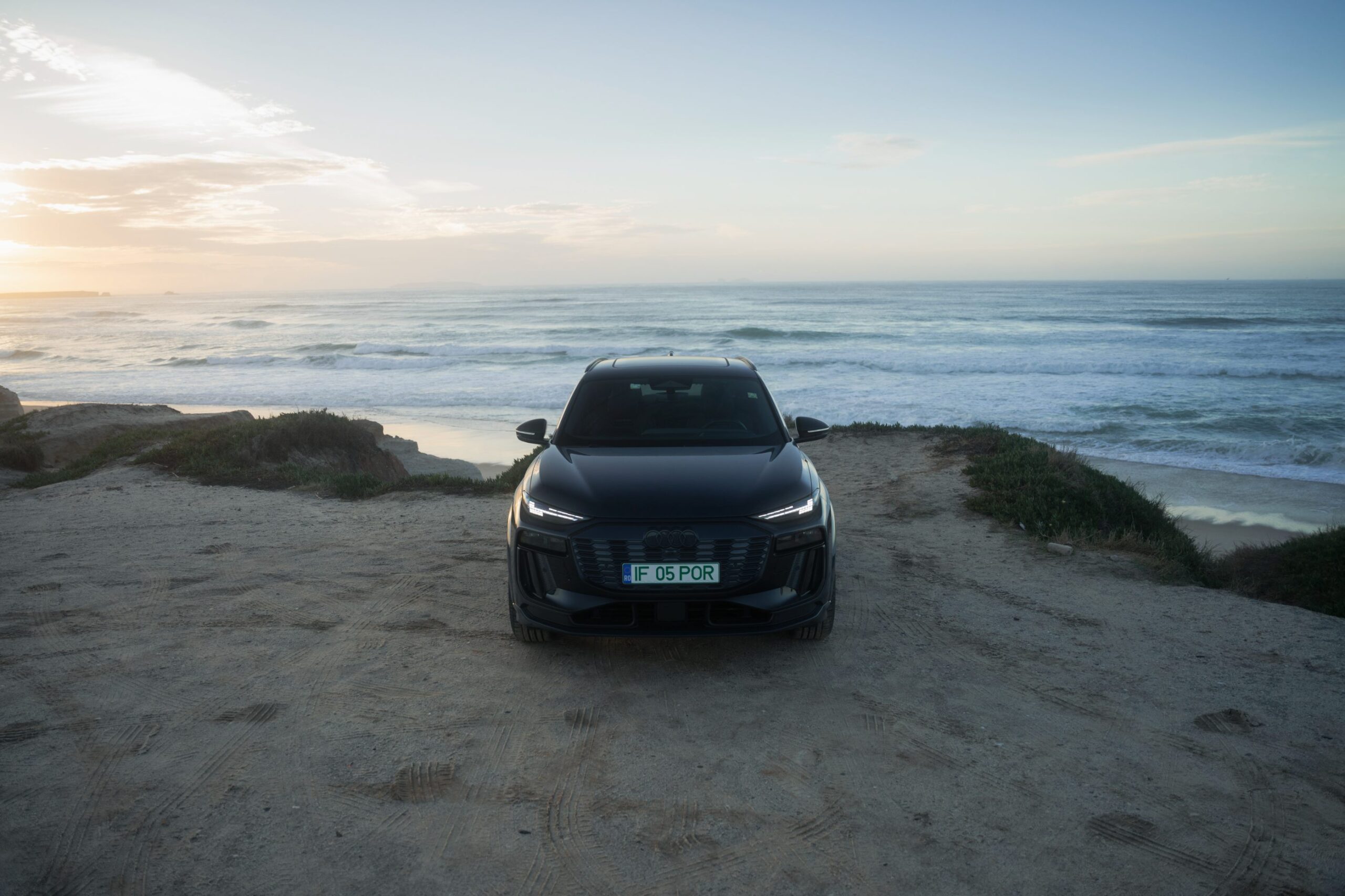
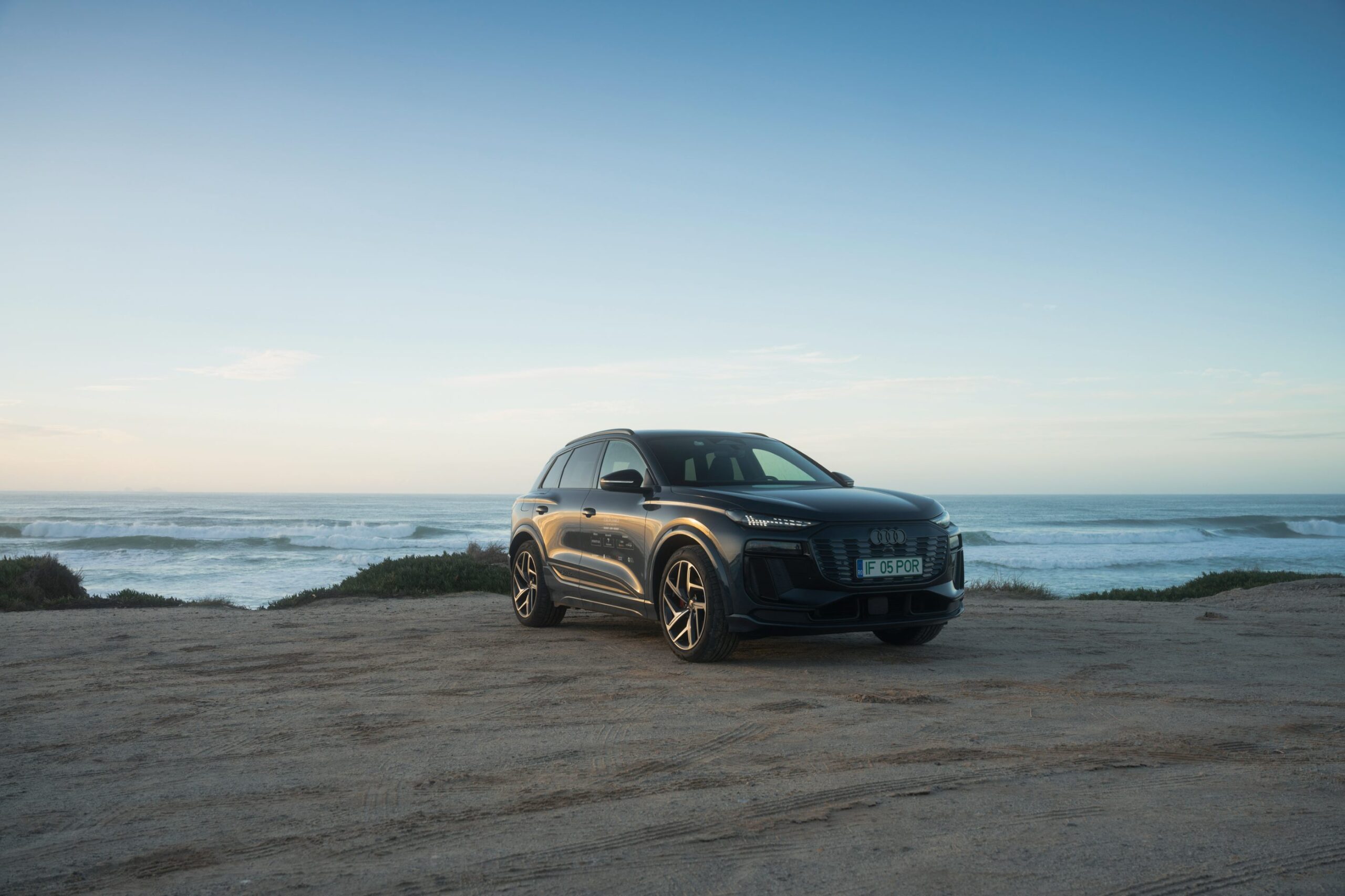
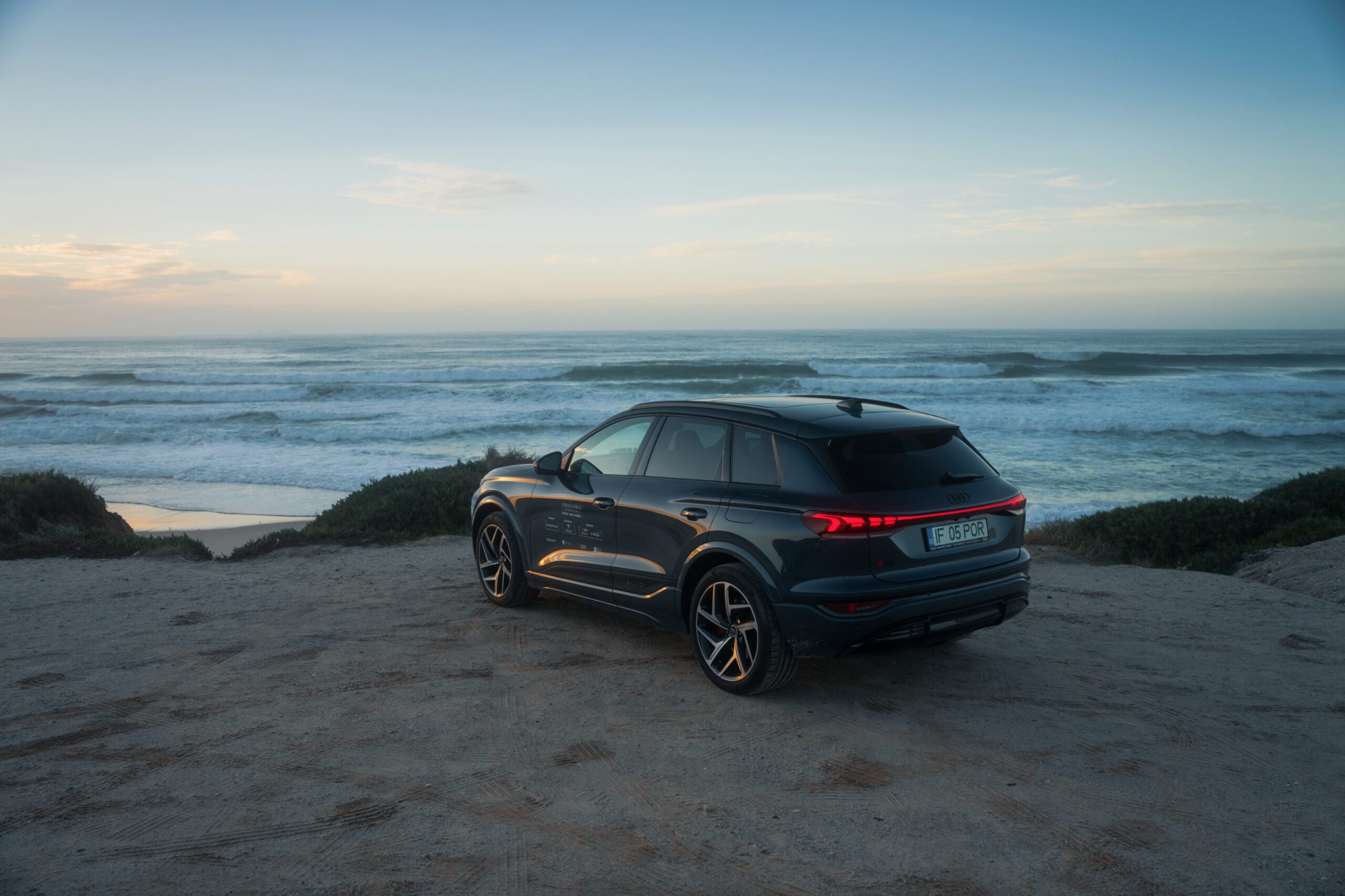
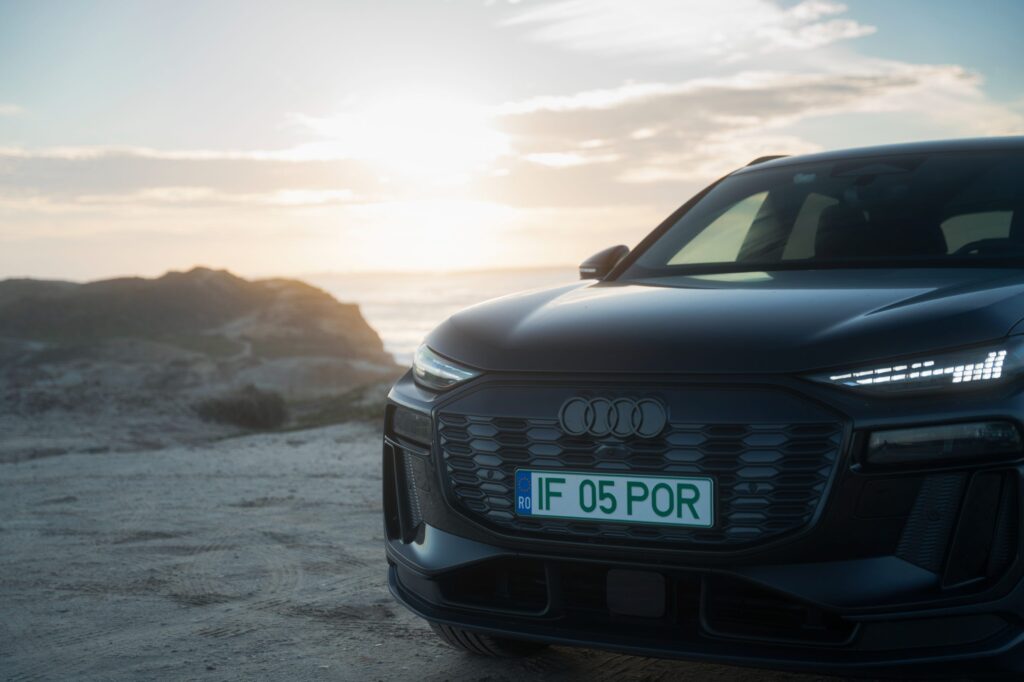

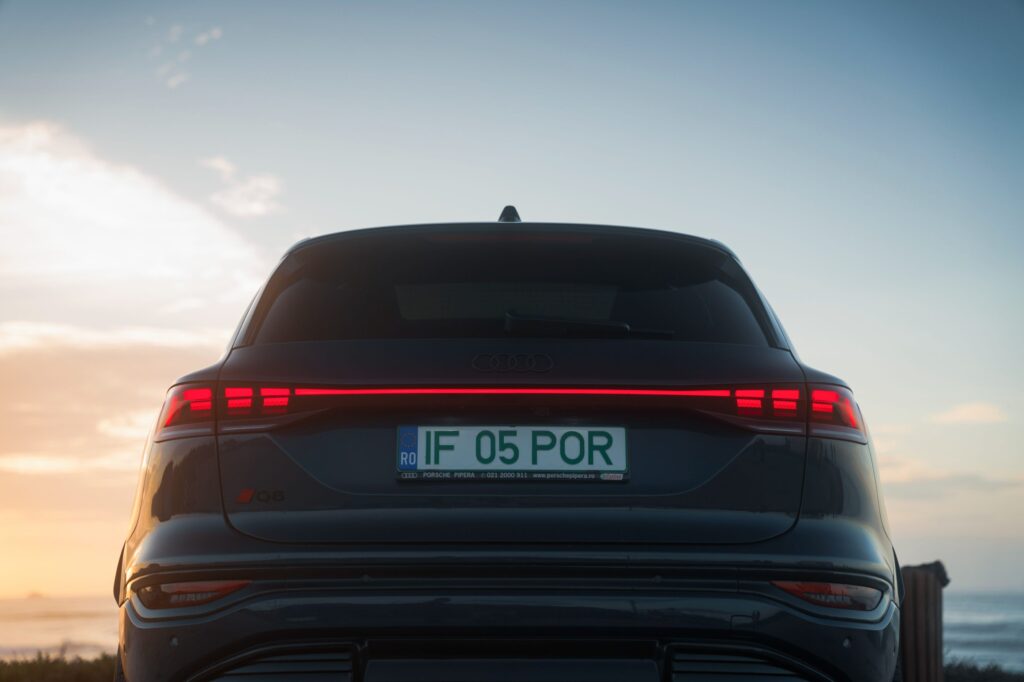
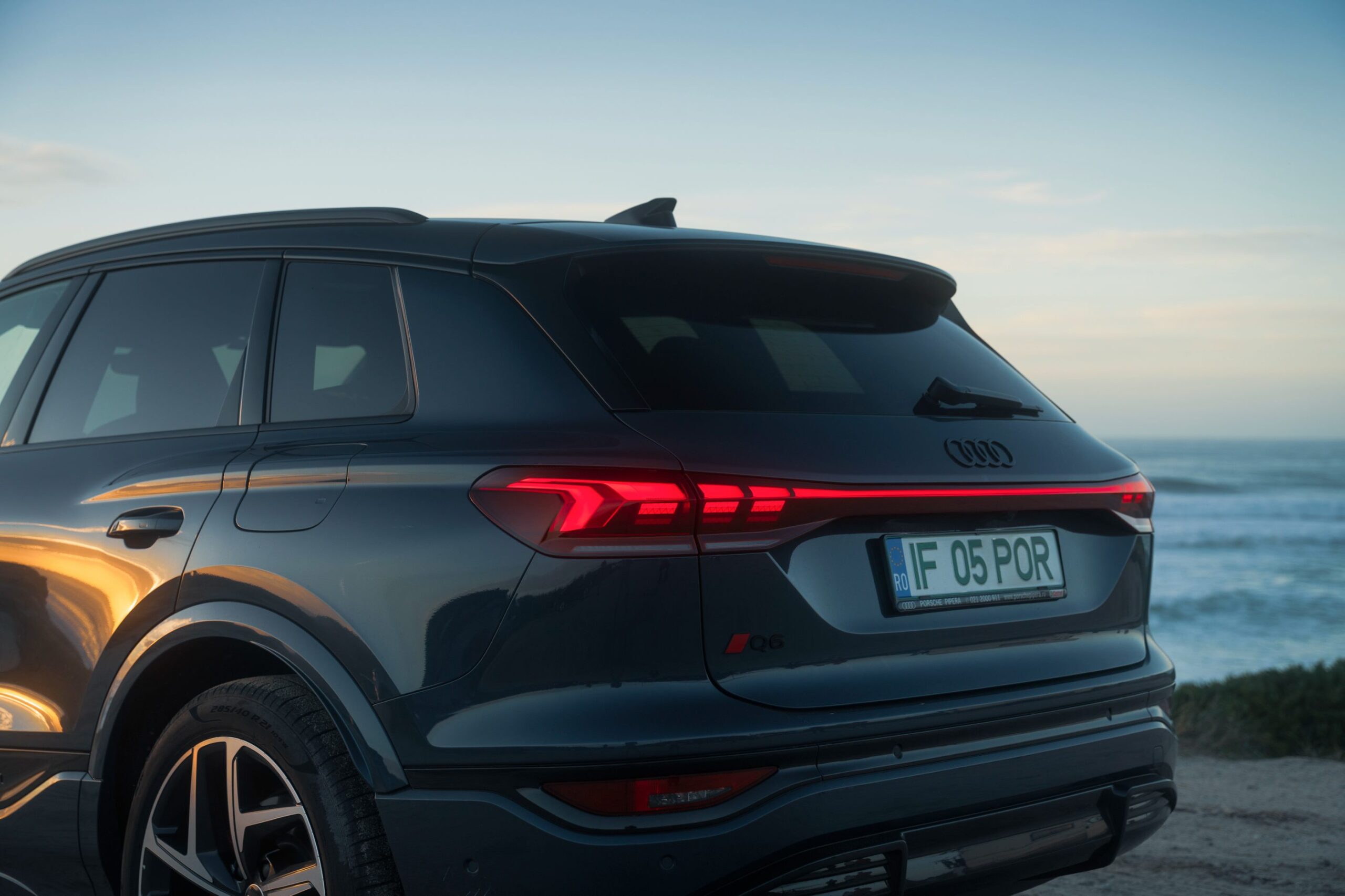
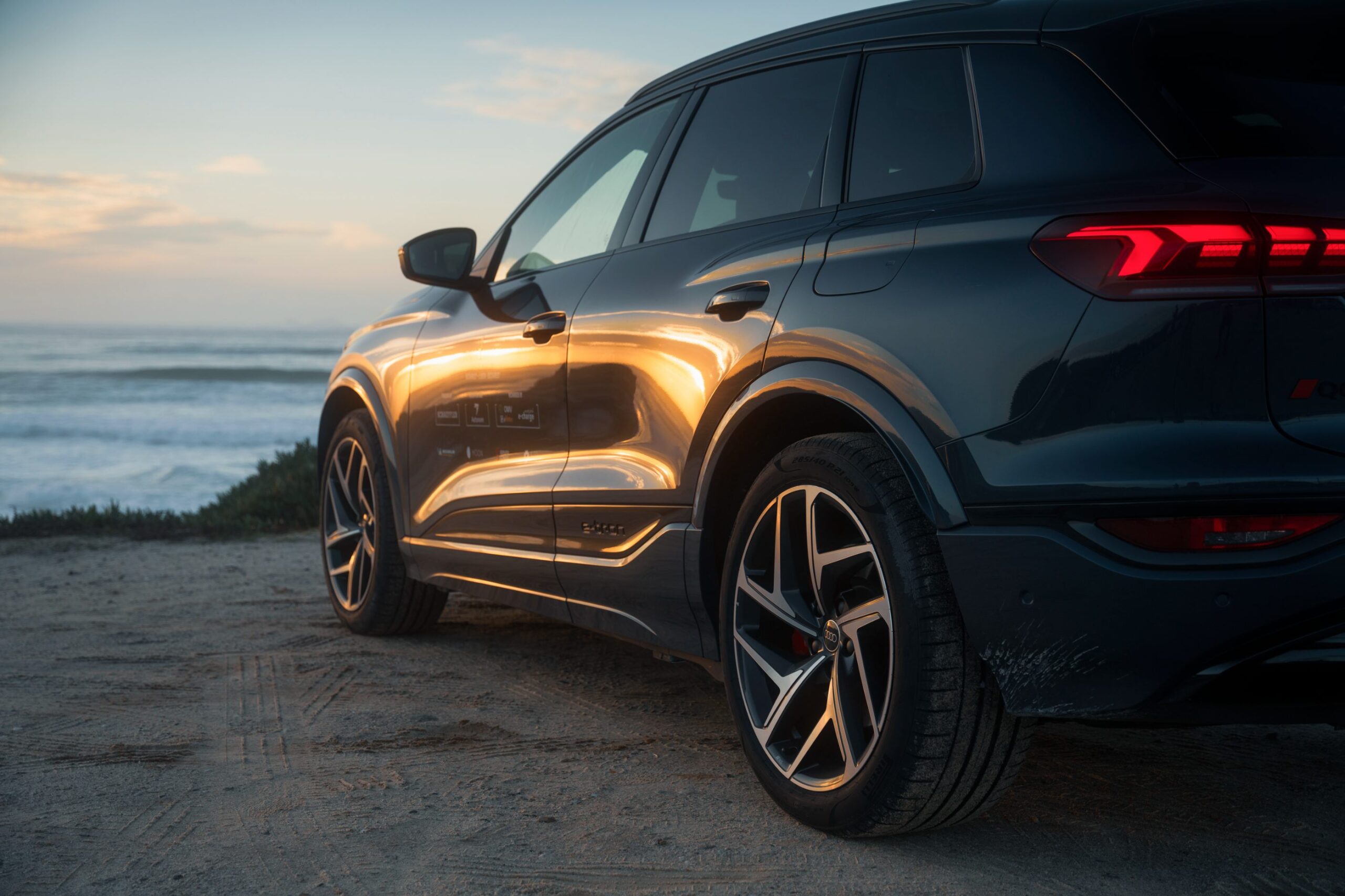
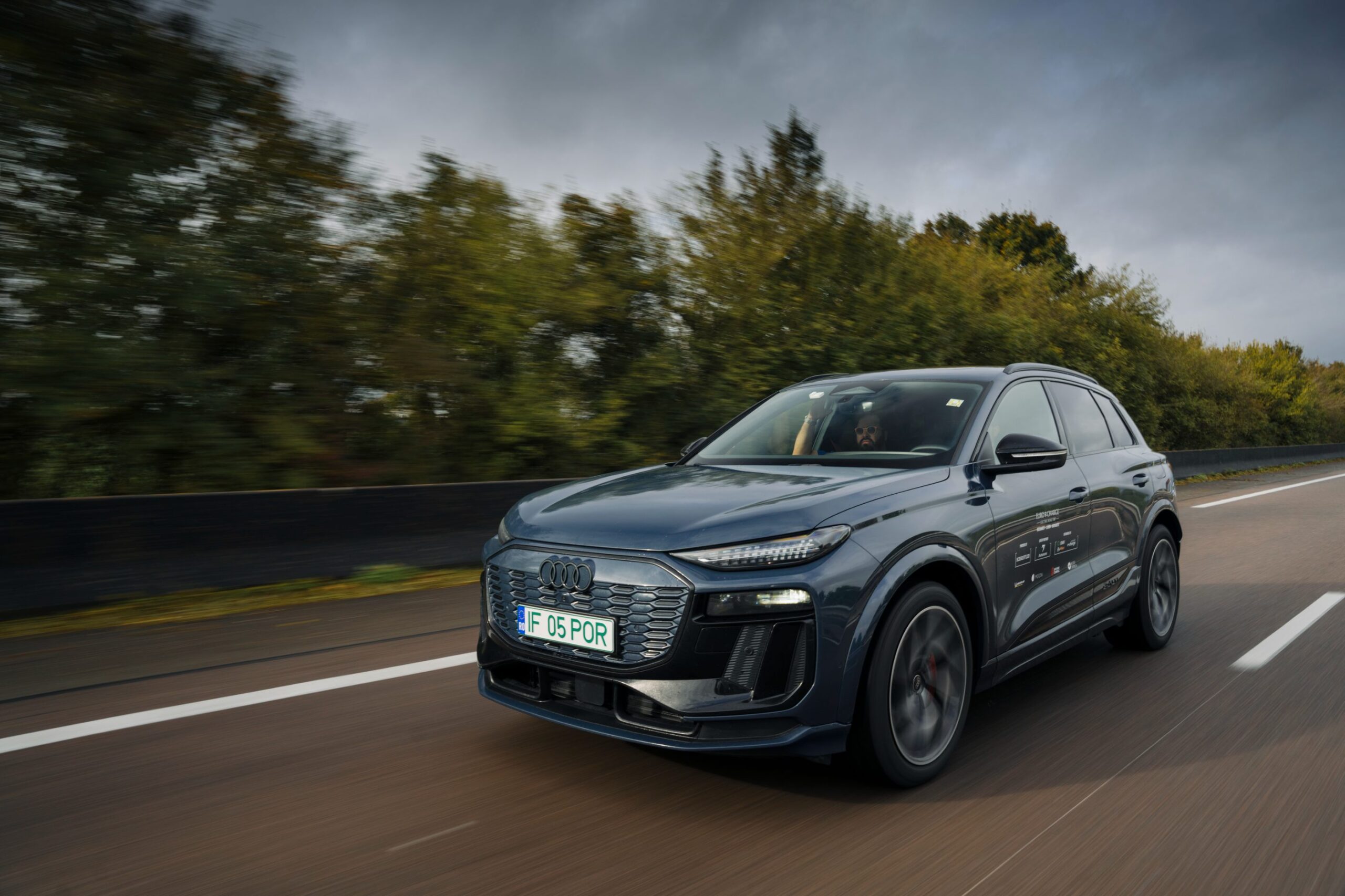
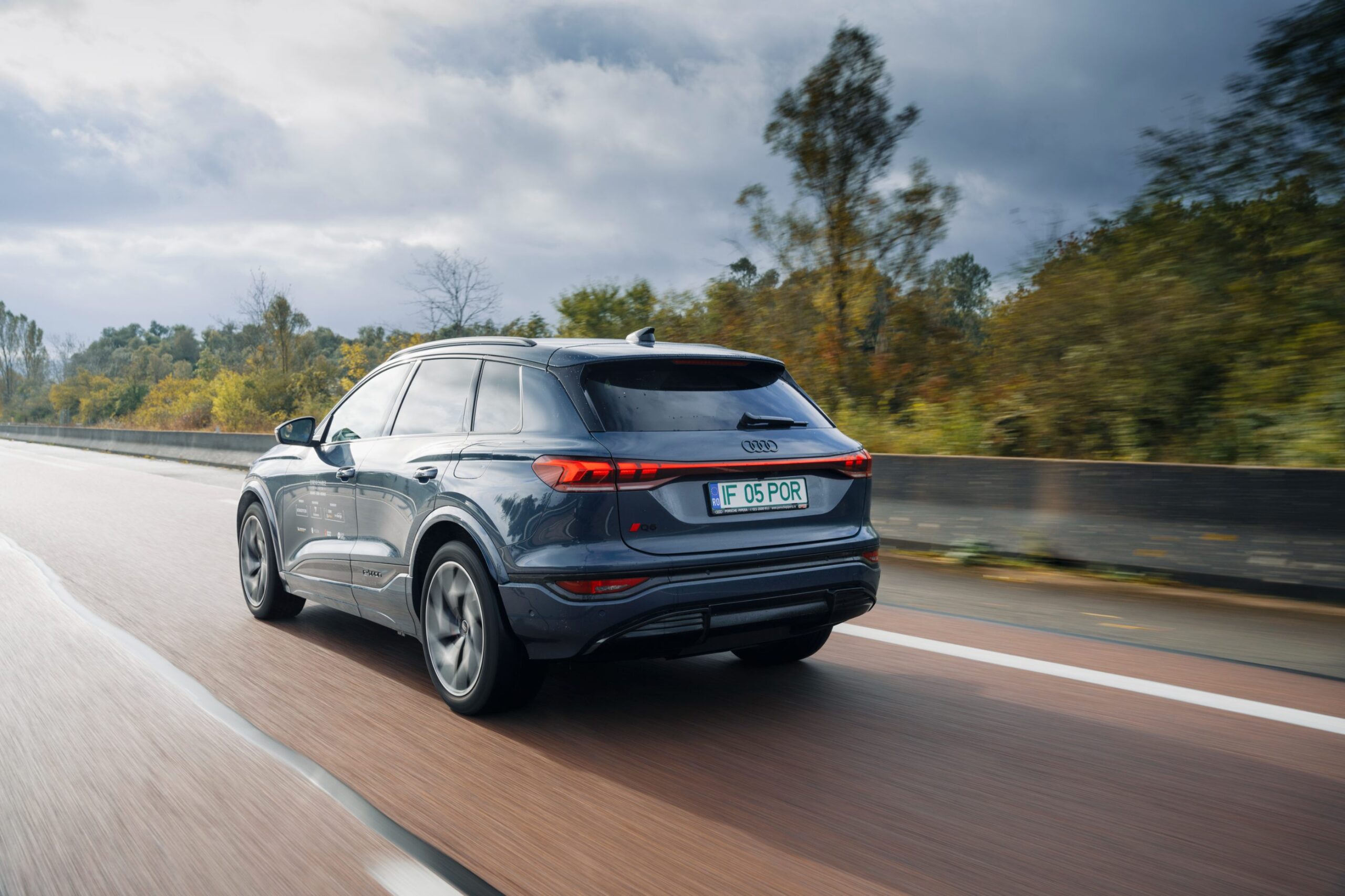
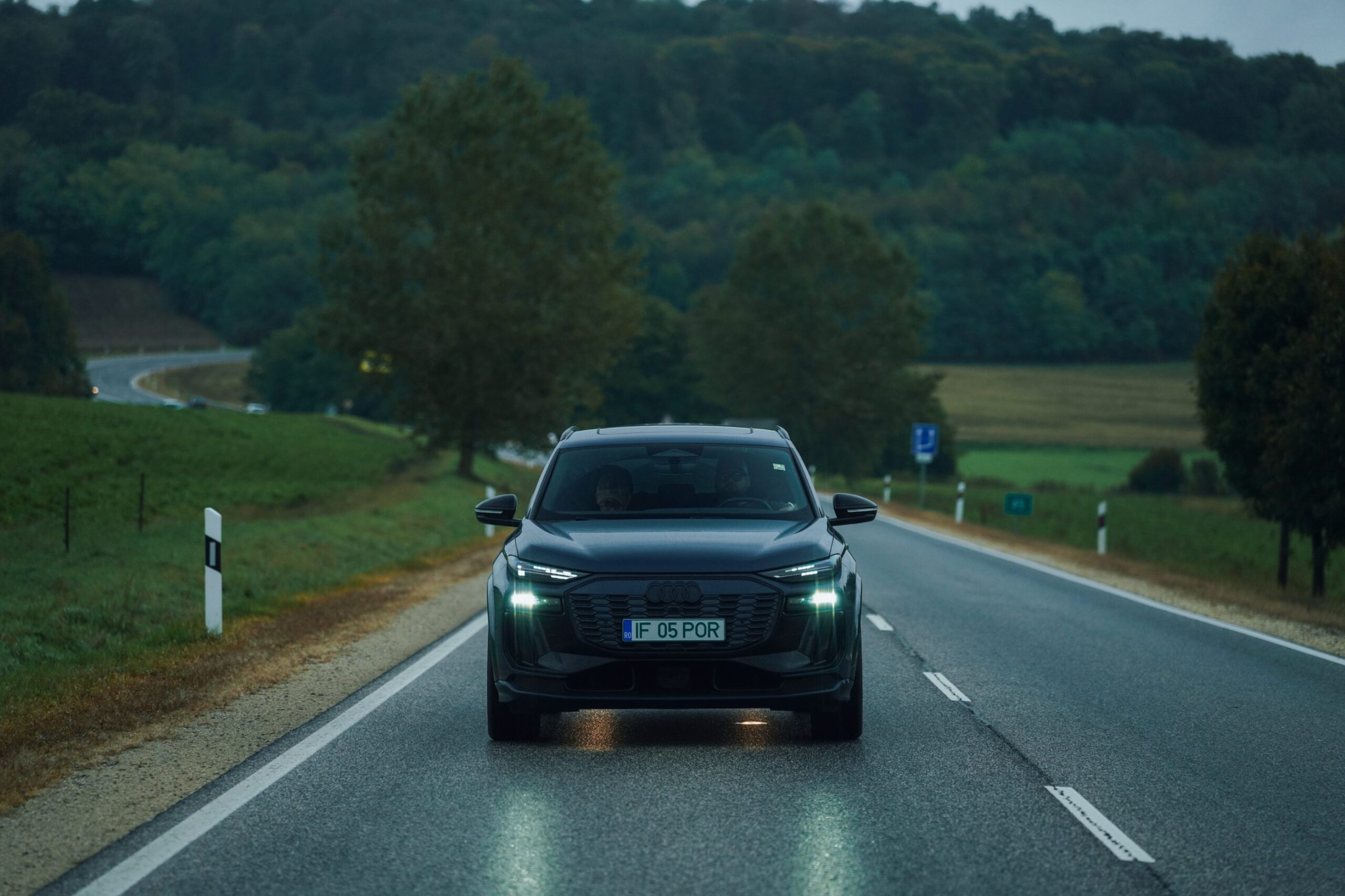

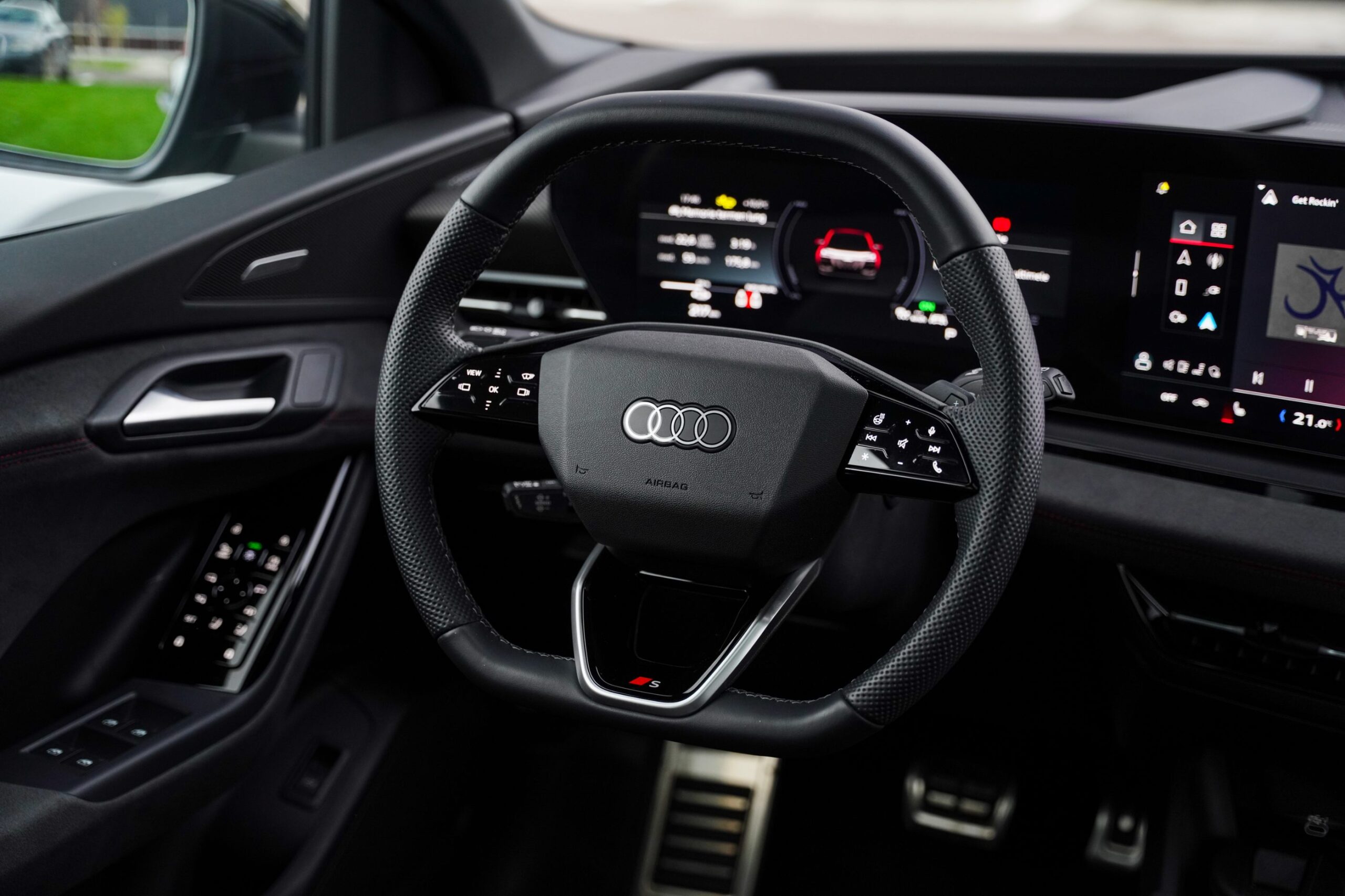
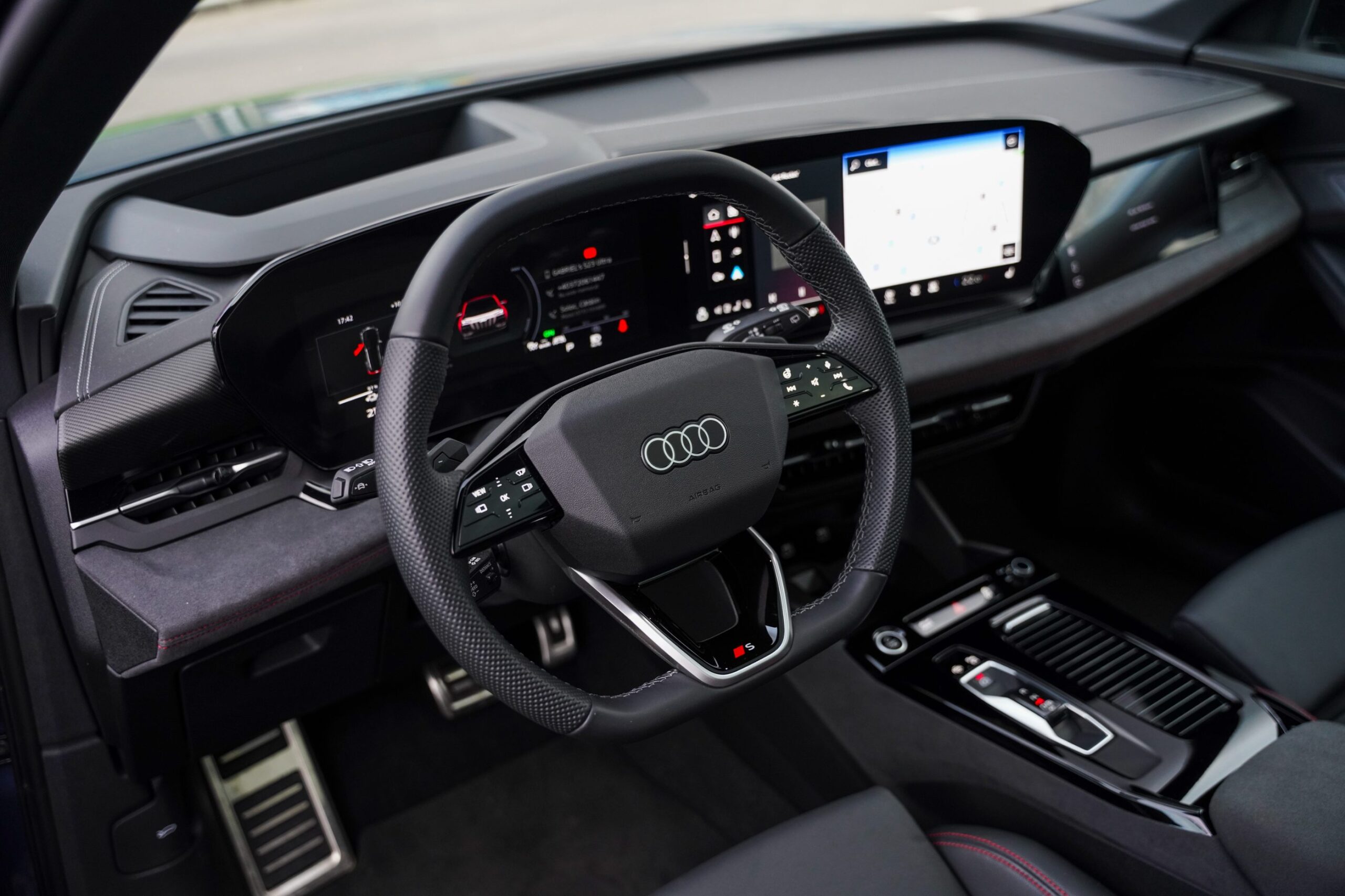
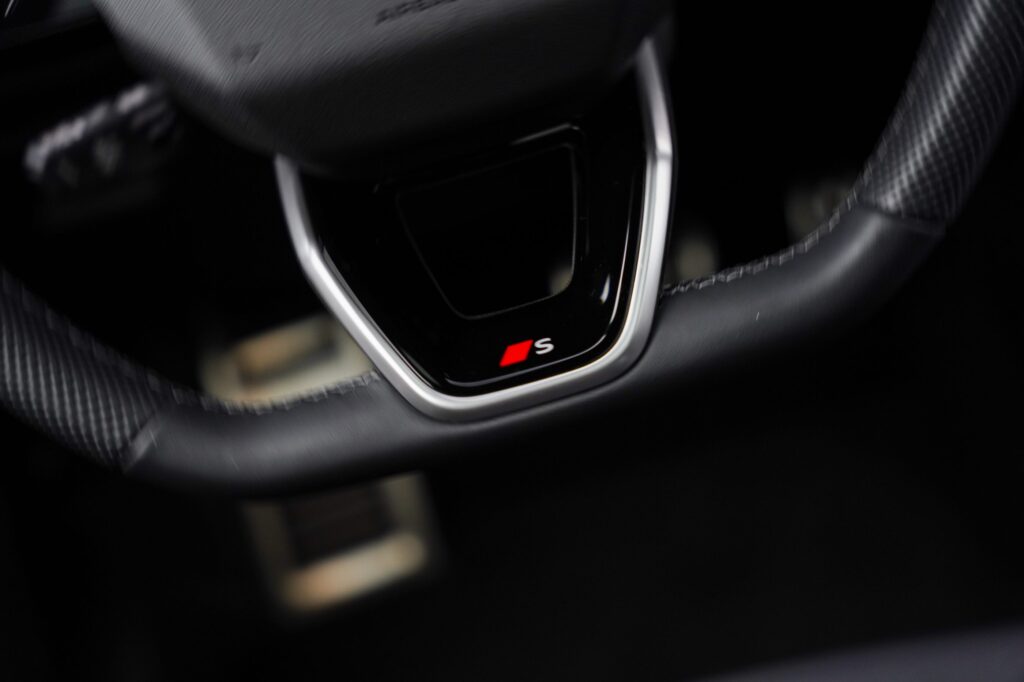
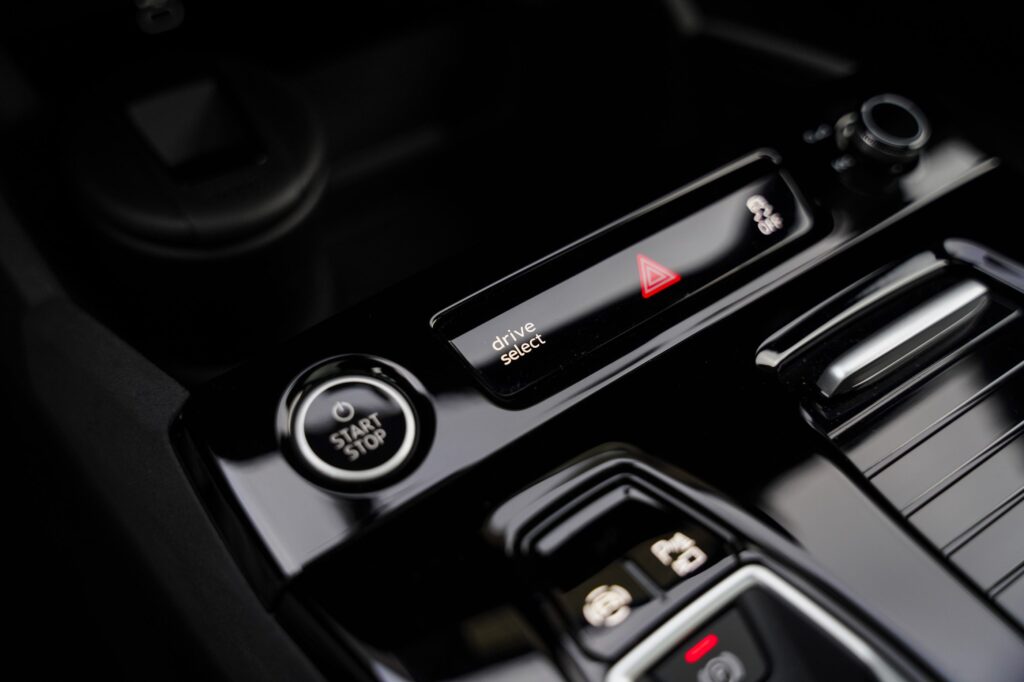
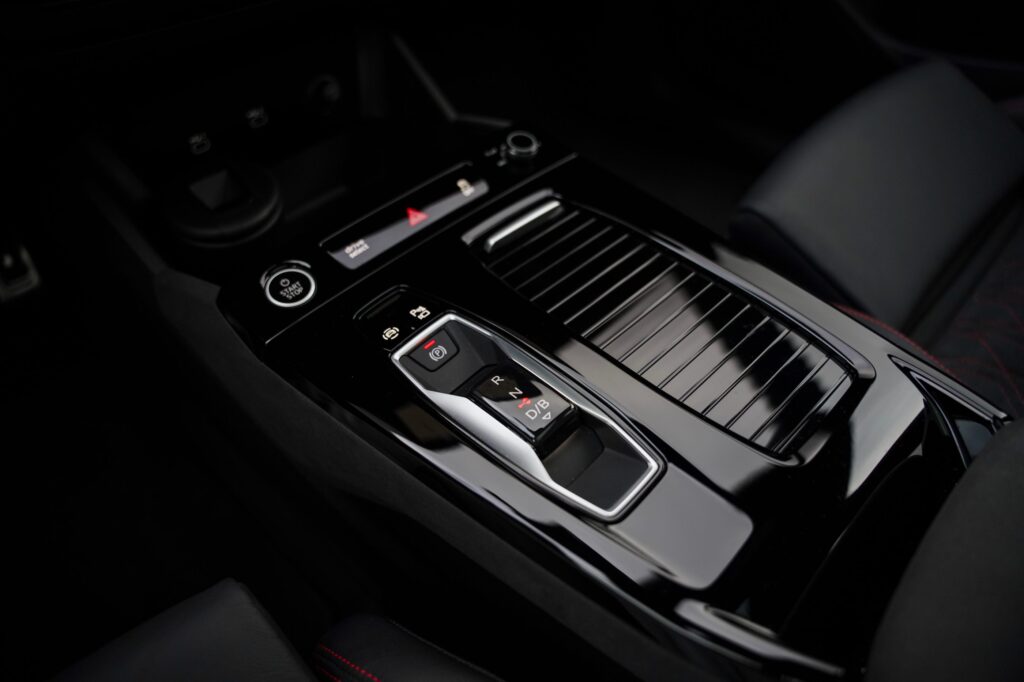
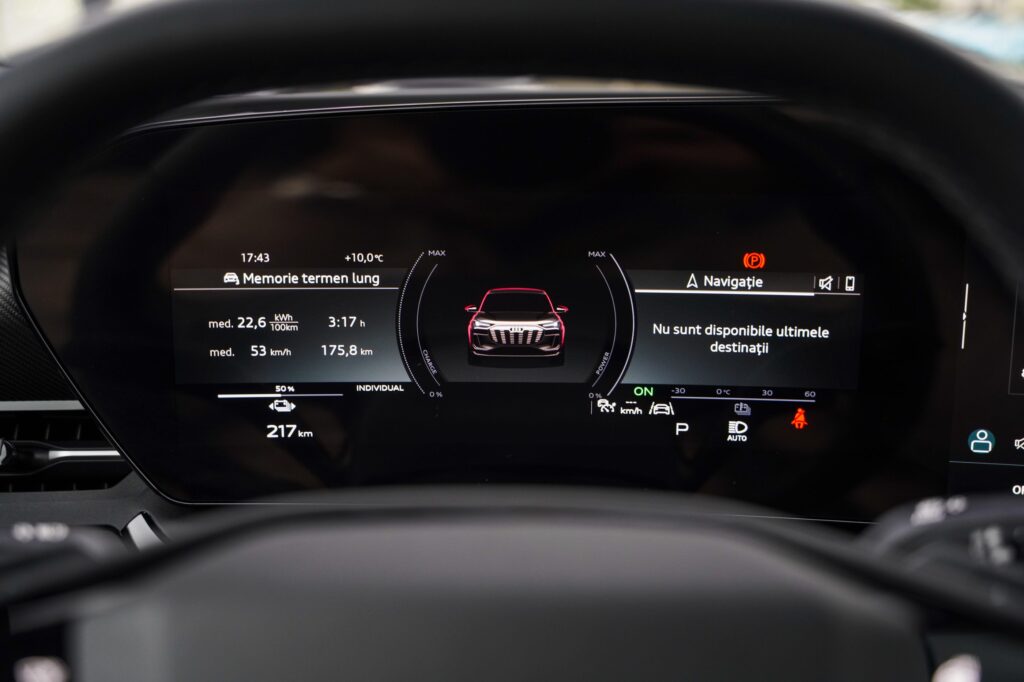
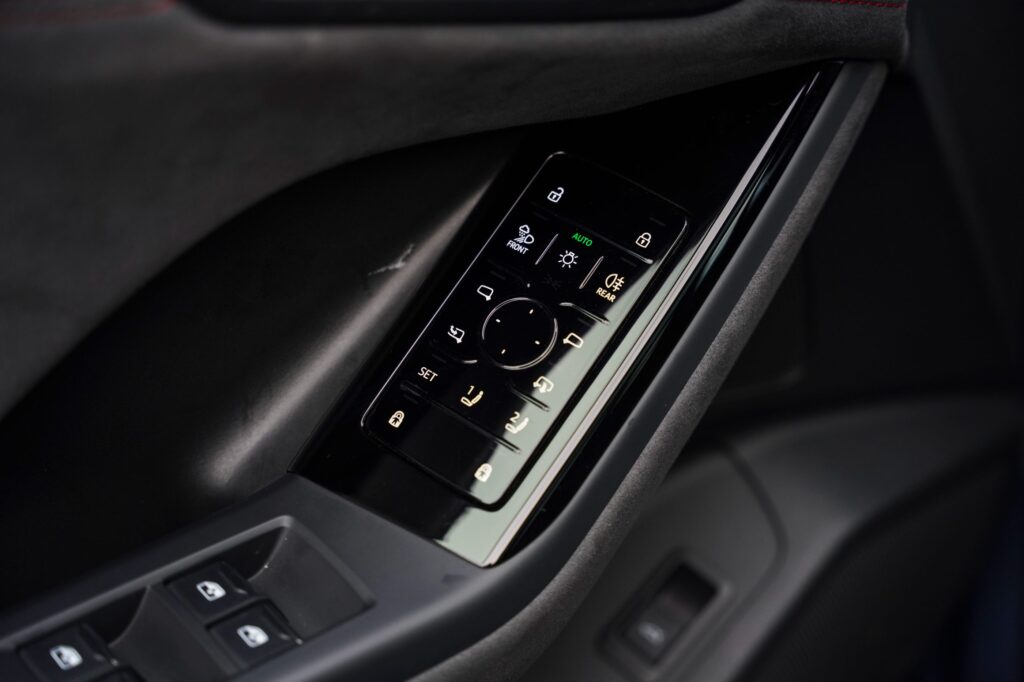
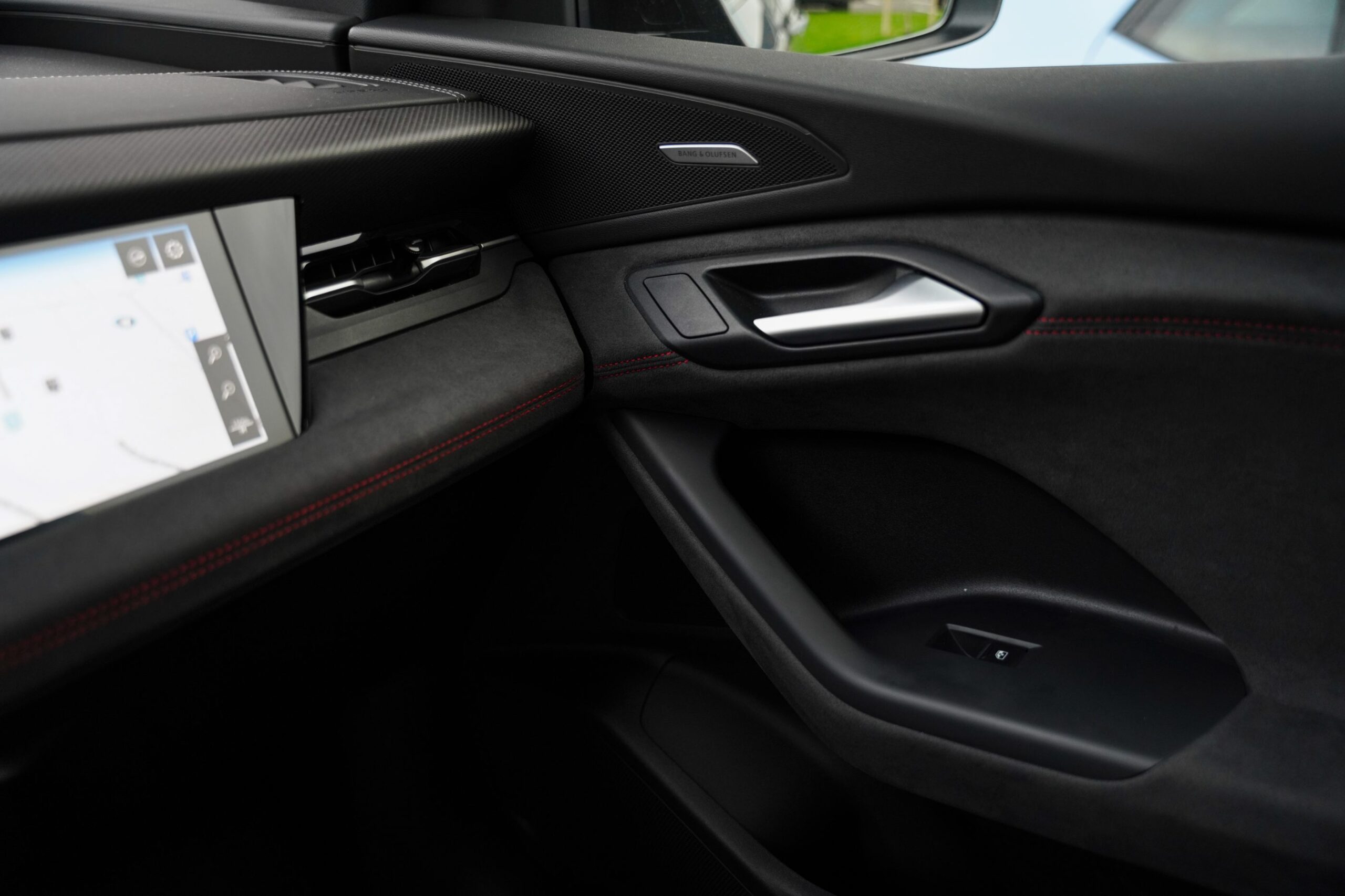
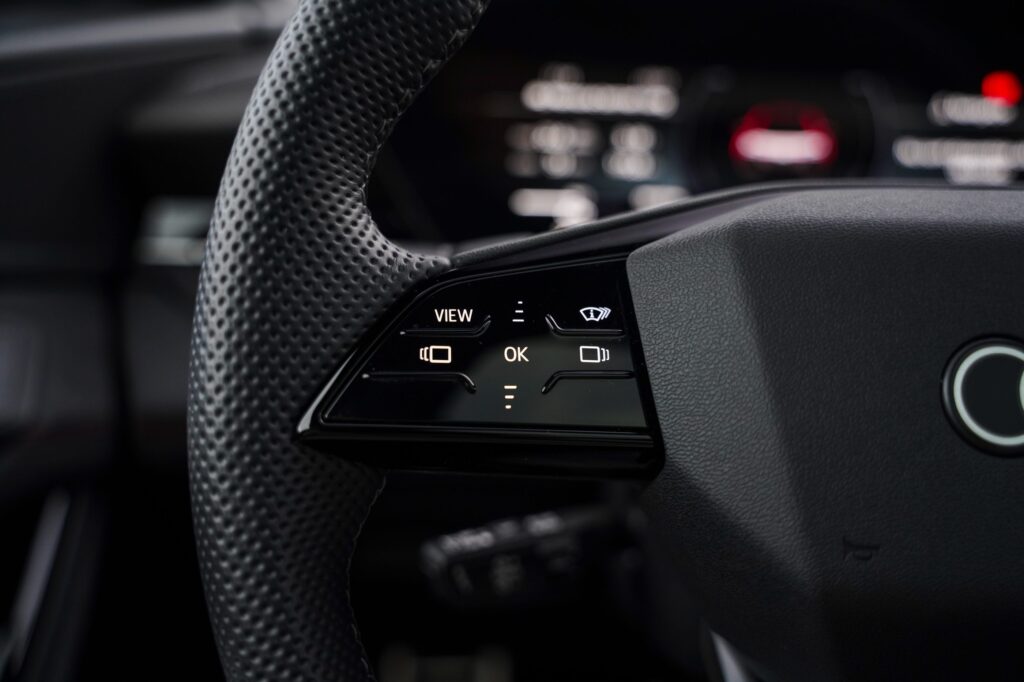
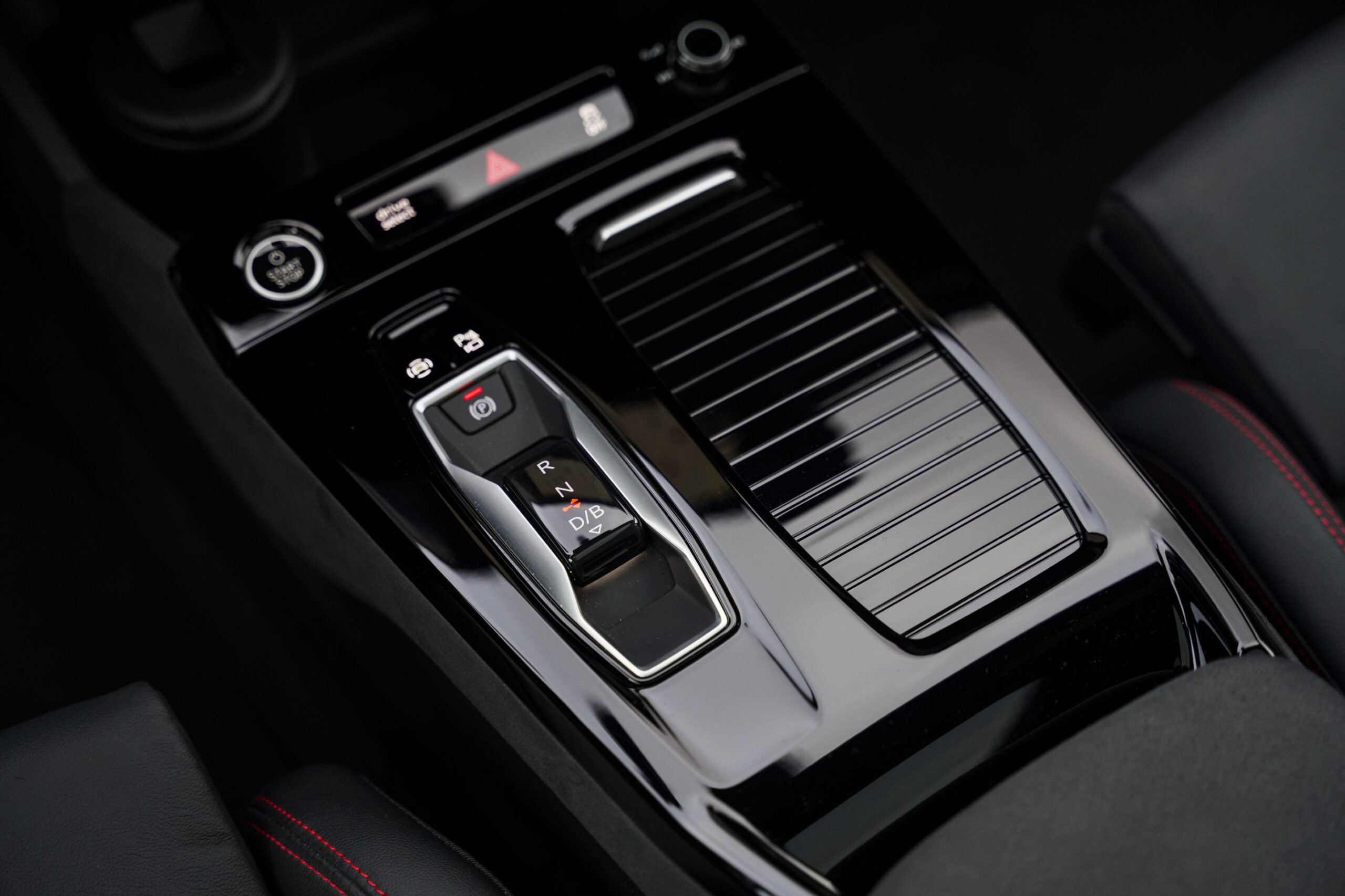
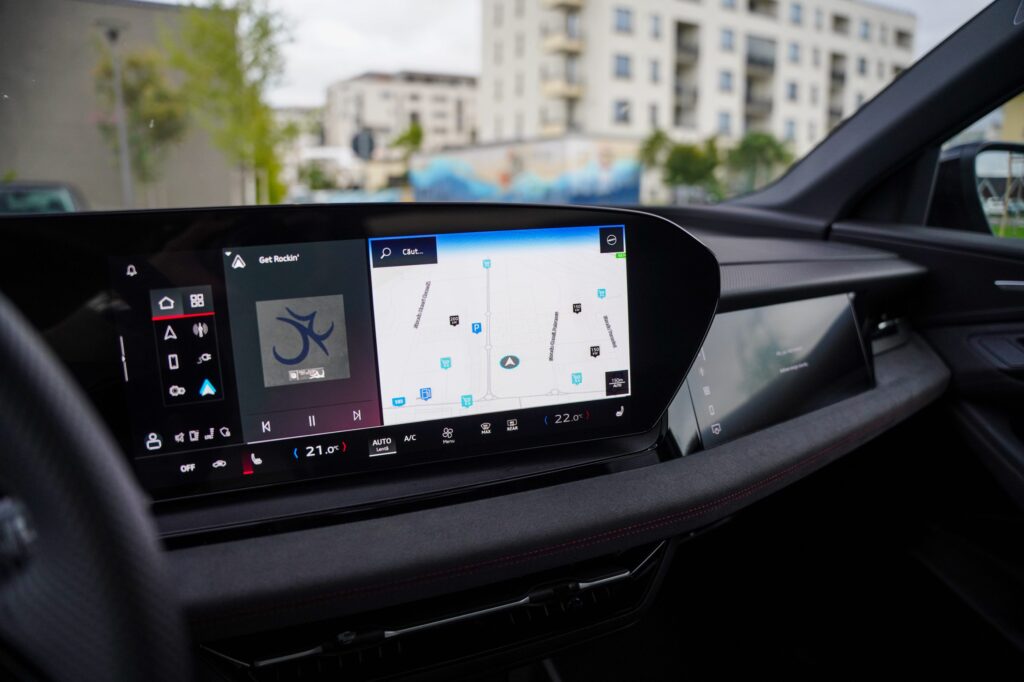
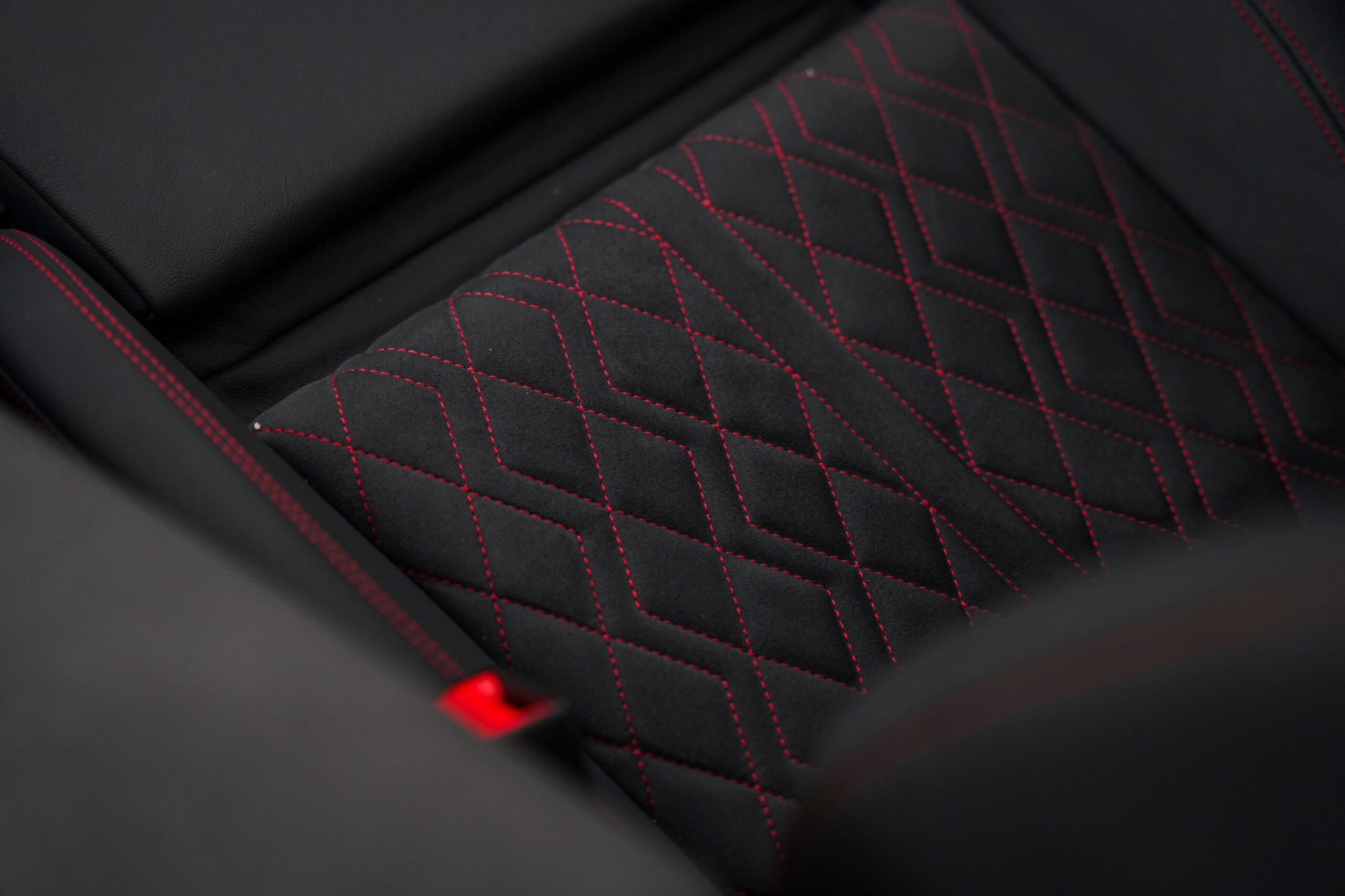
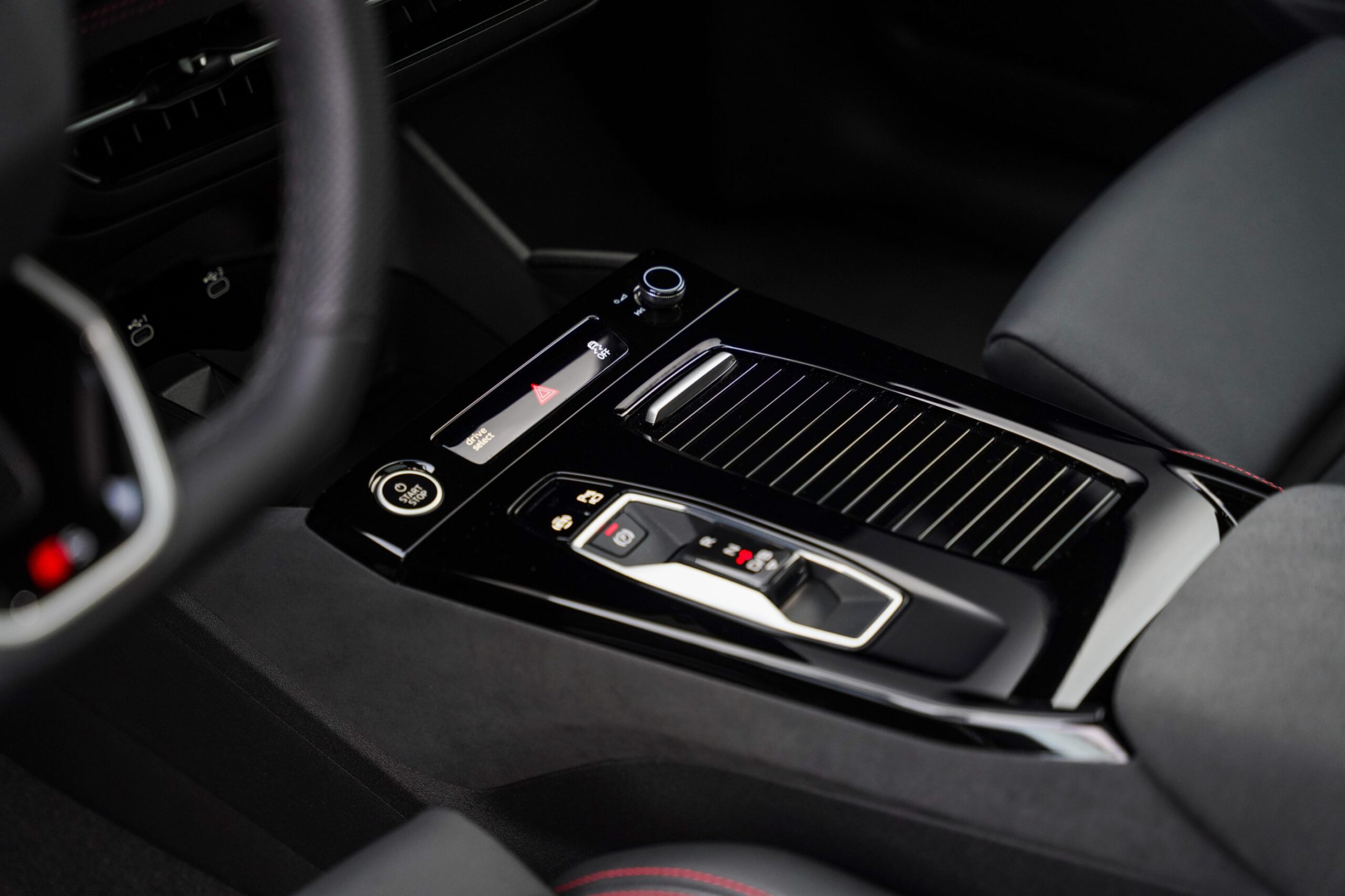
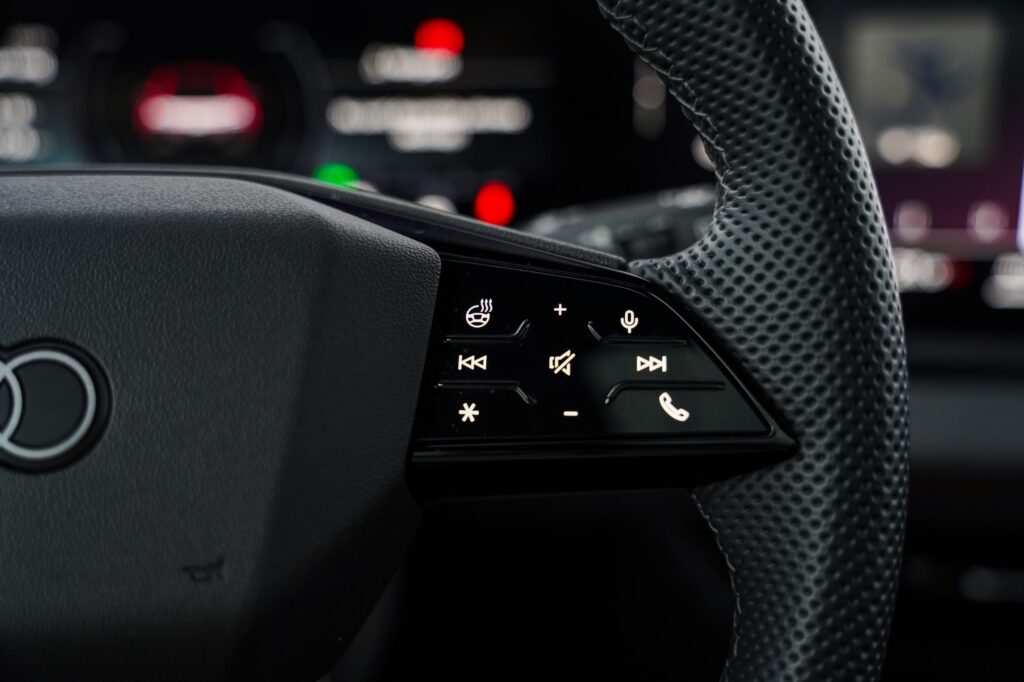
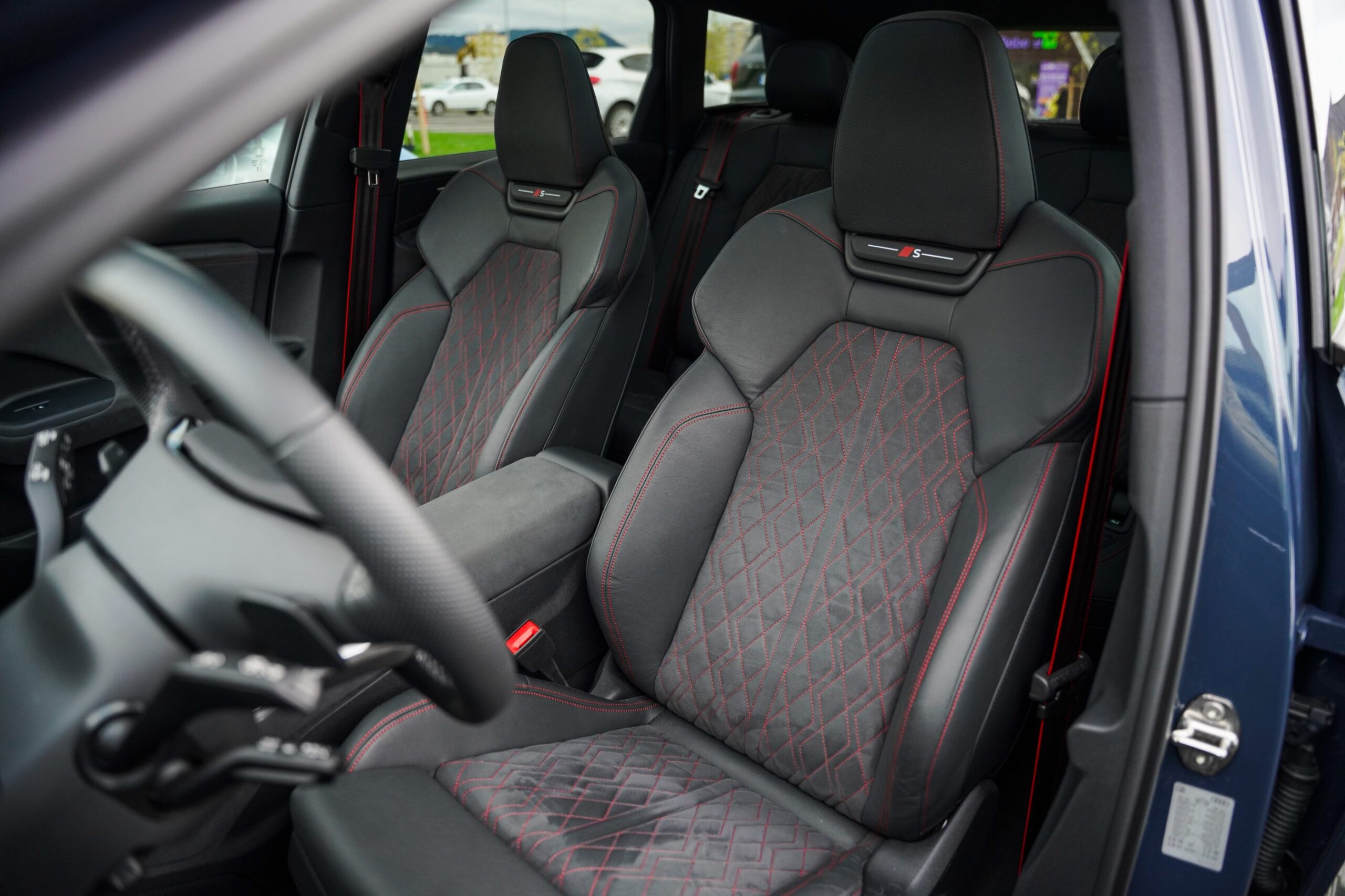
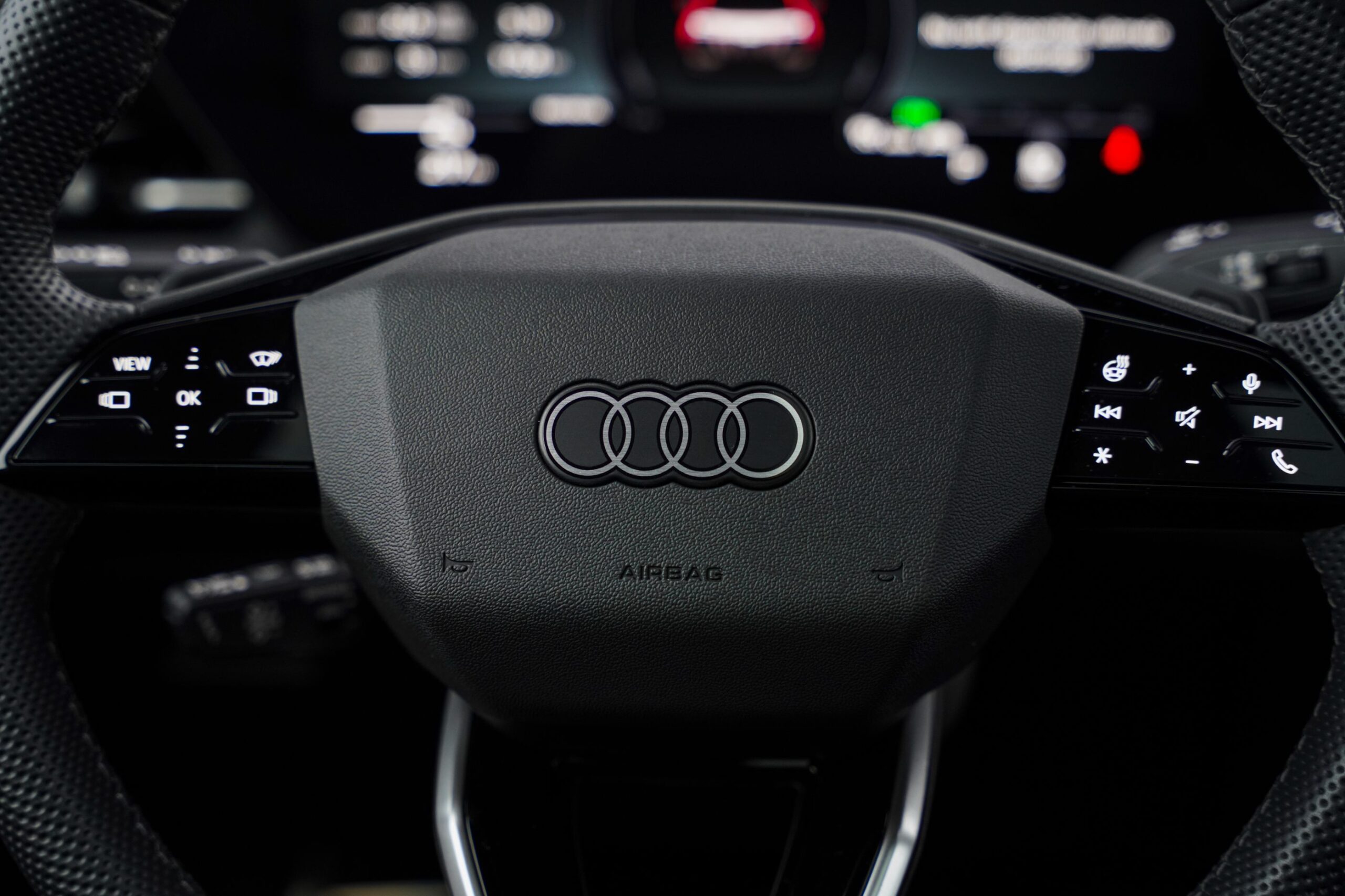
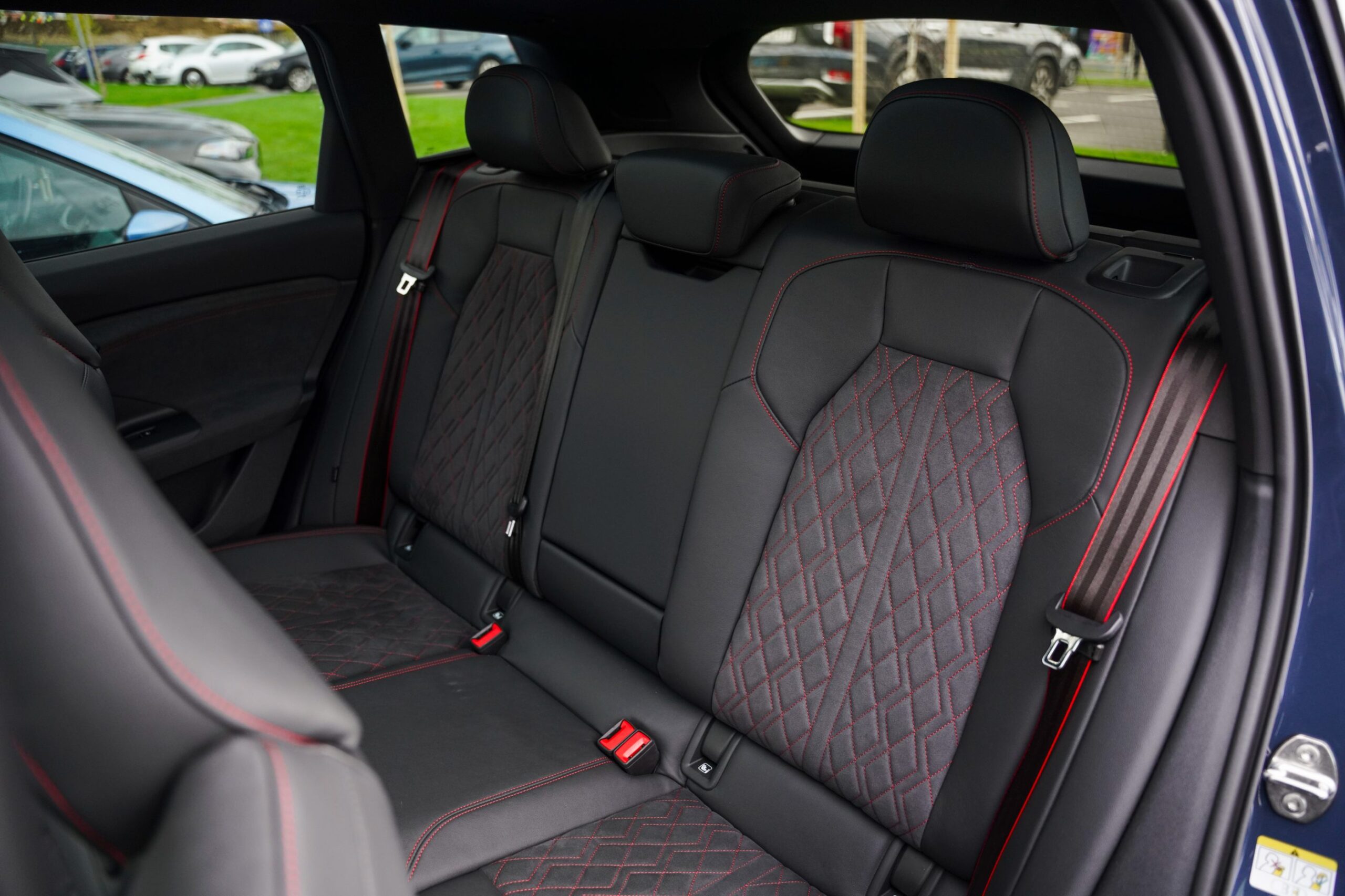
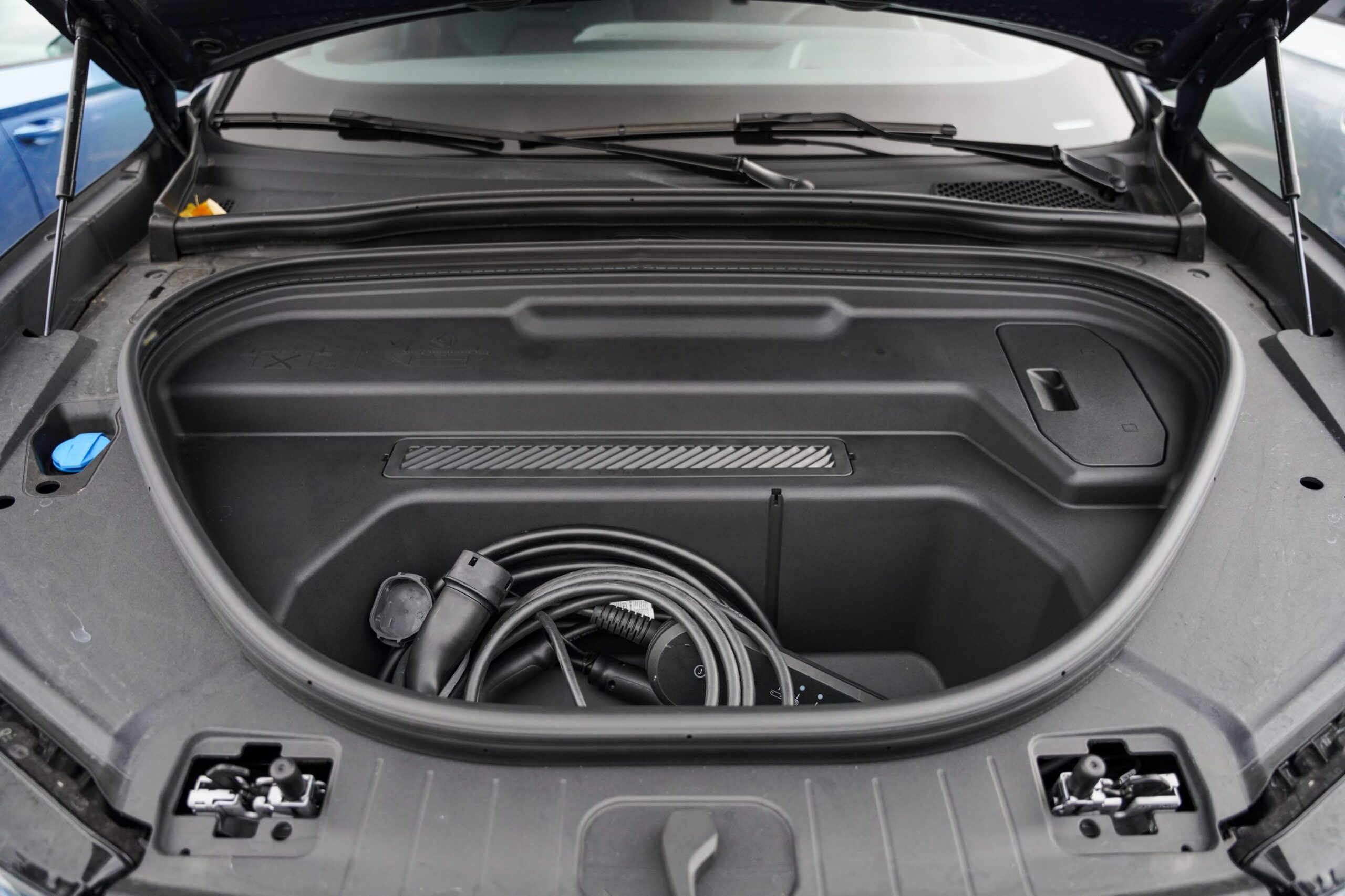
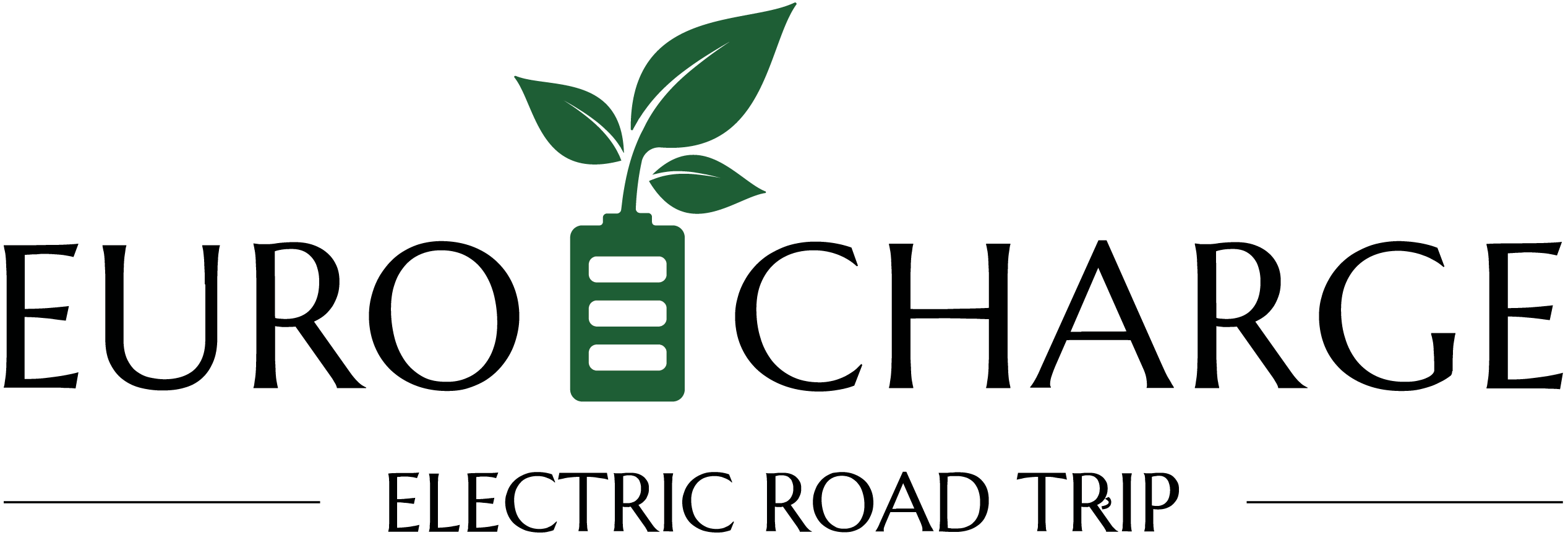
is a project backed by SCHAEFFLER
Charged by
OMV eMotion and Renovatio e-charge
Green Partner
Autonom
Charging stations
MOON România
On the road with
Michelin
Powered by
Server Config

